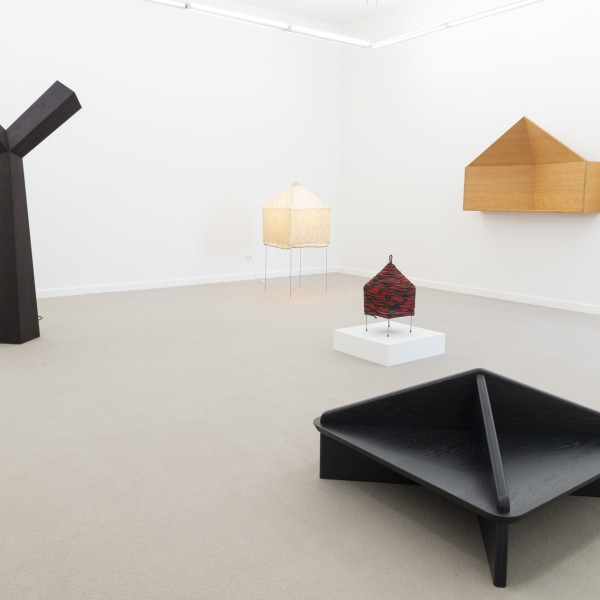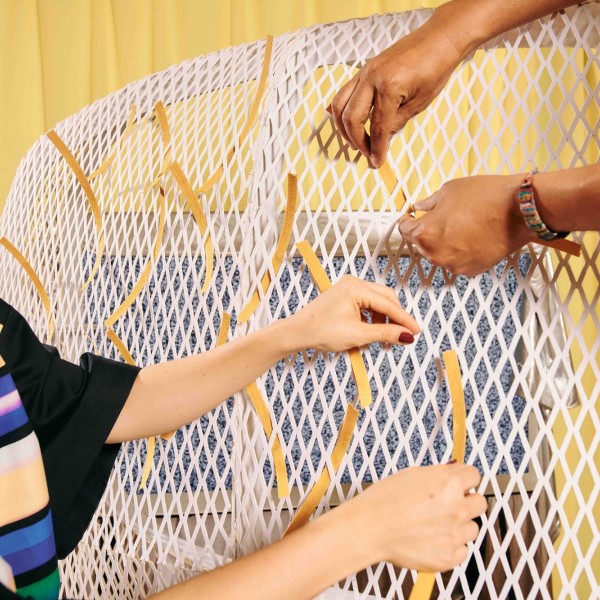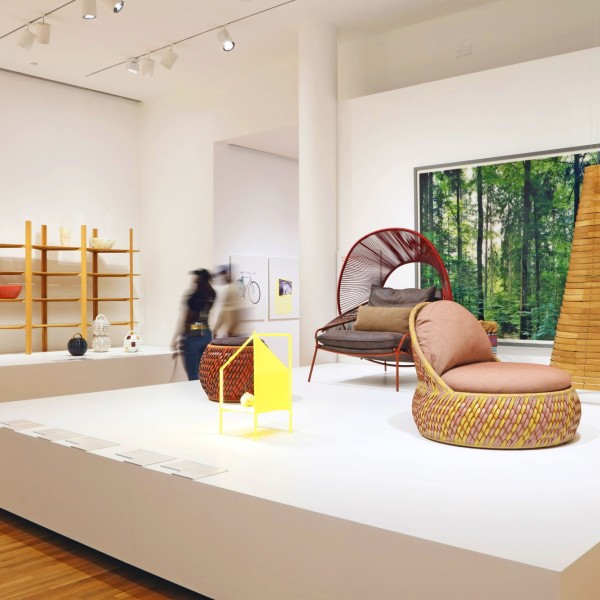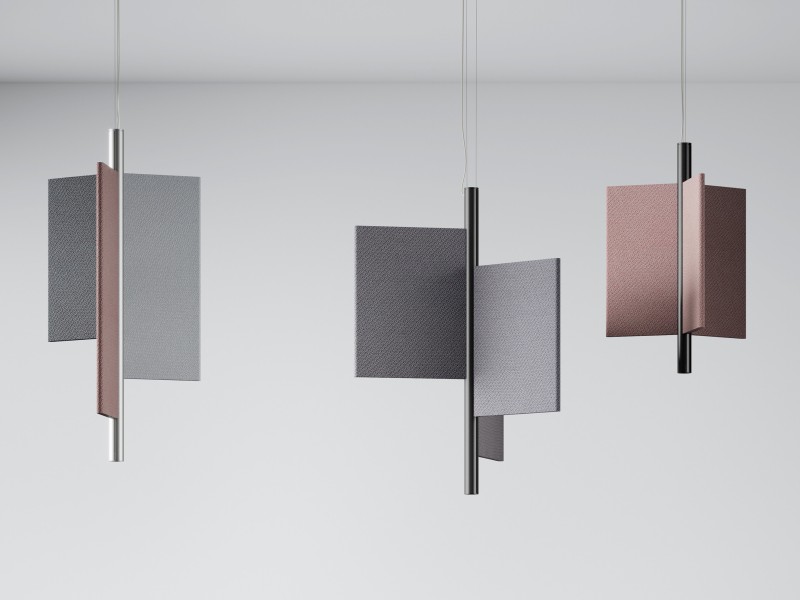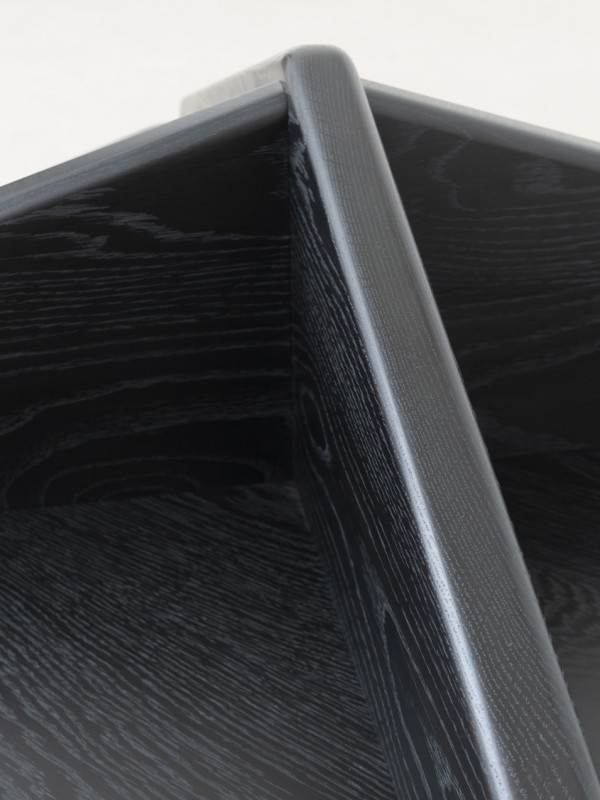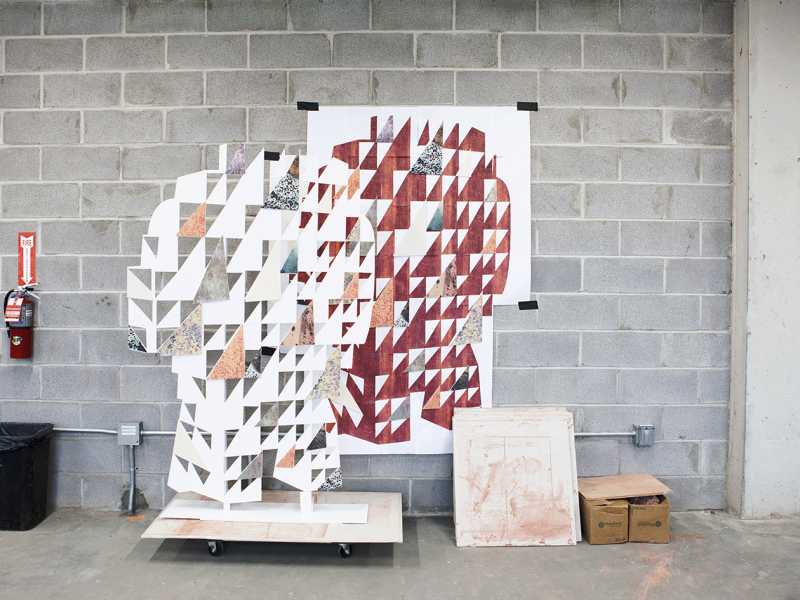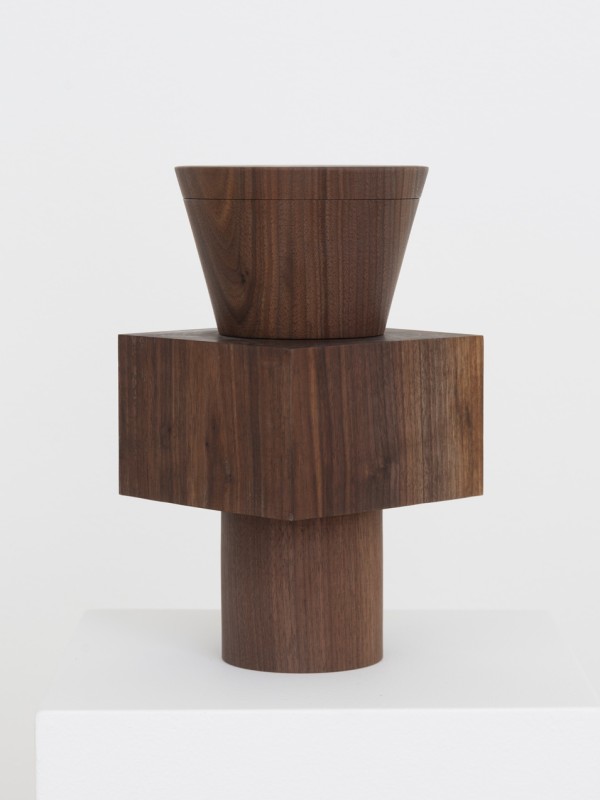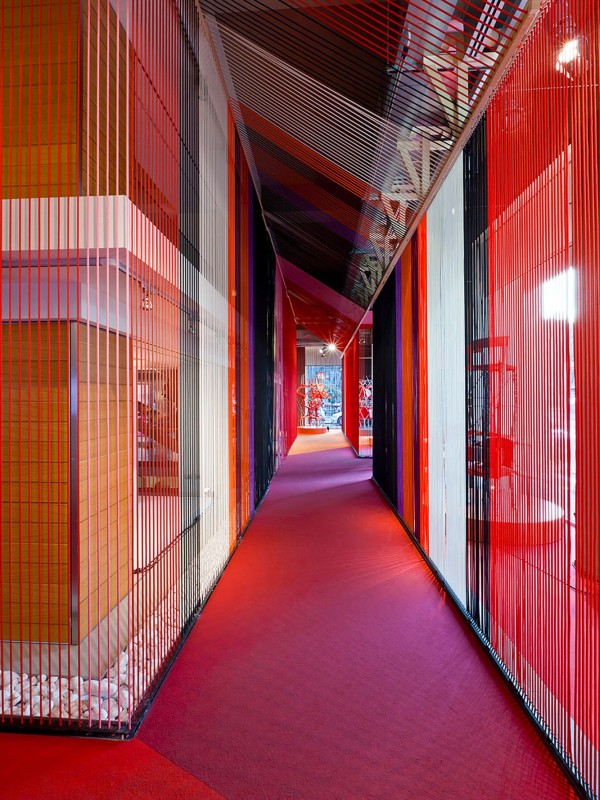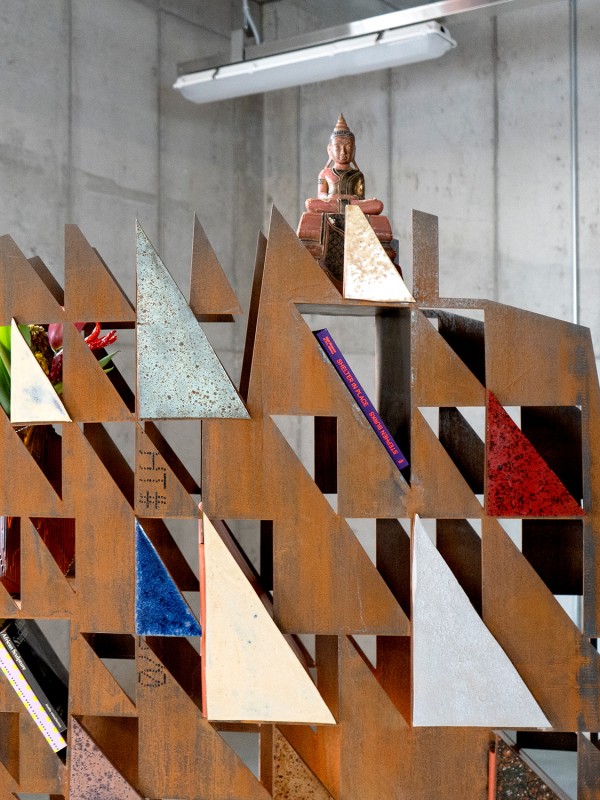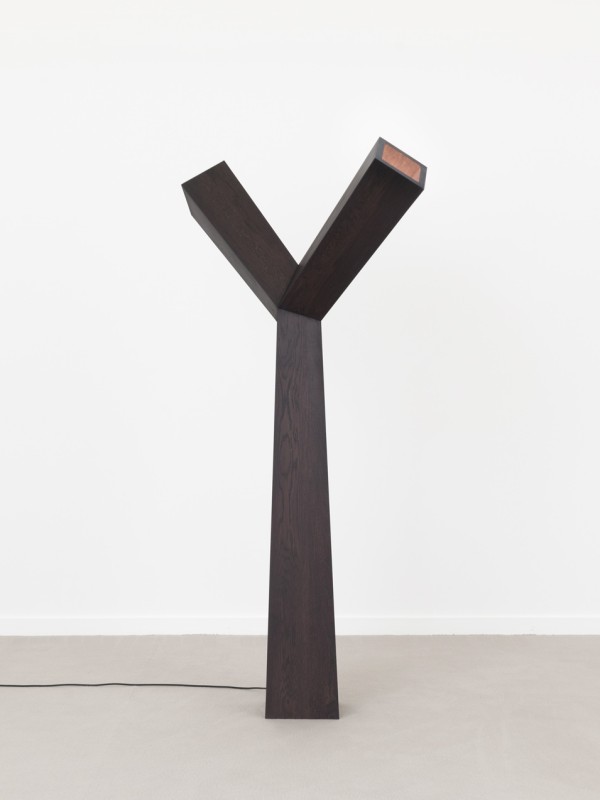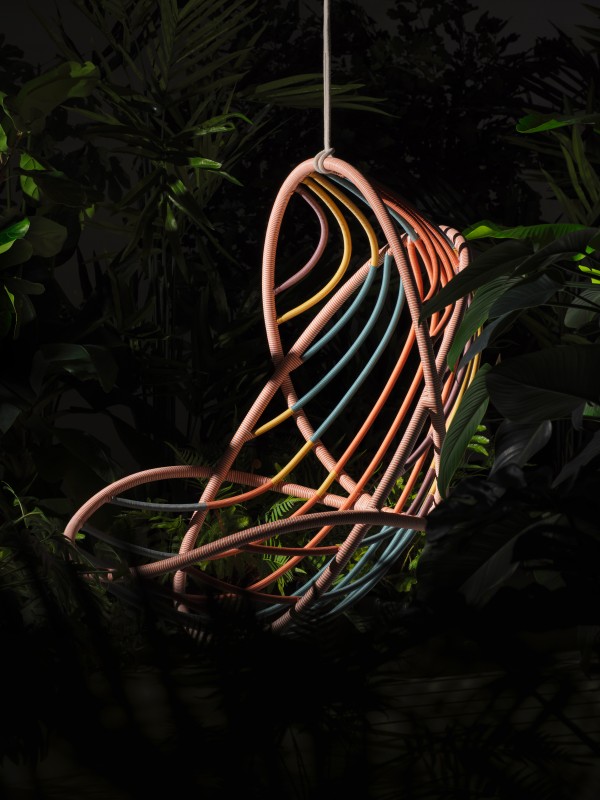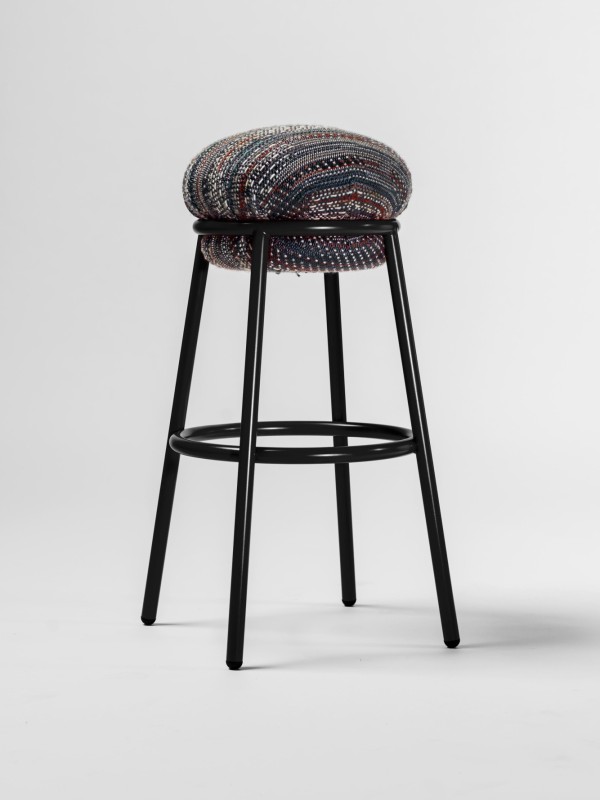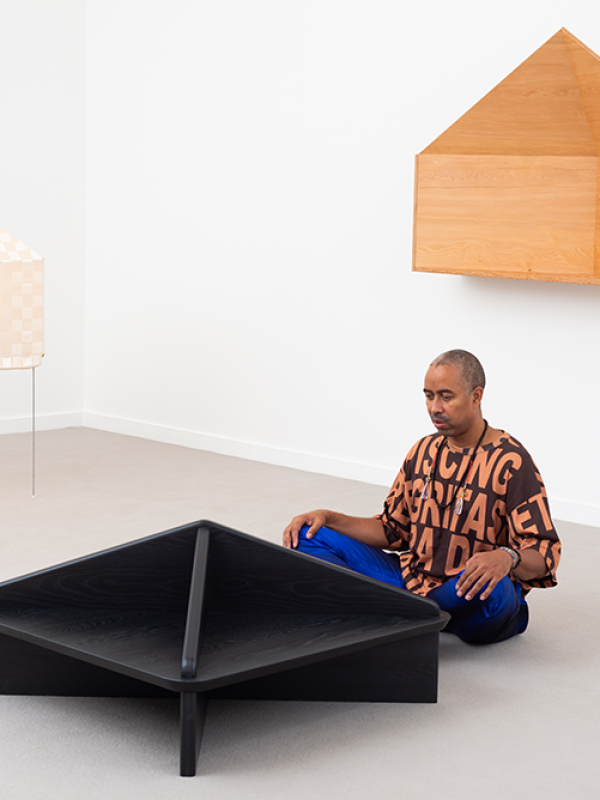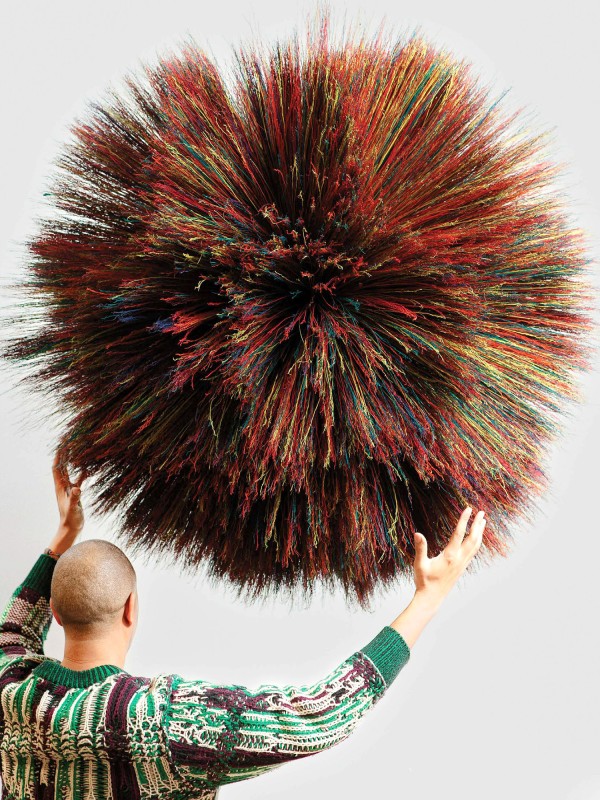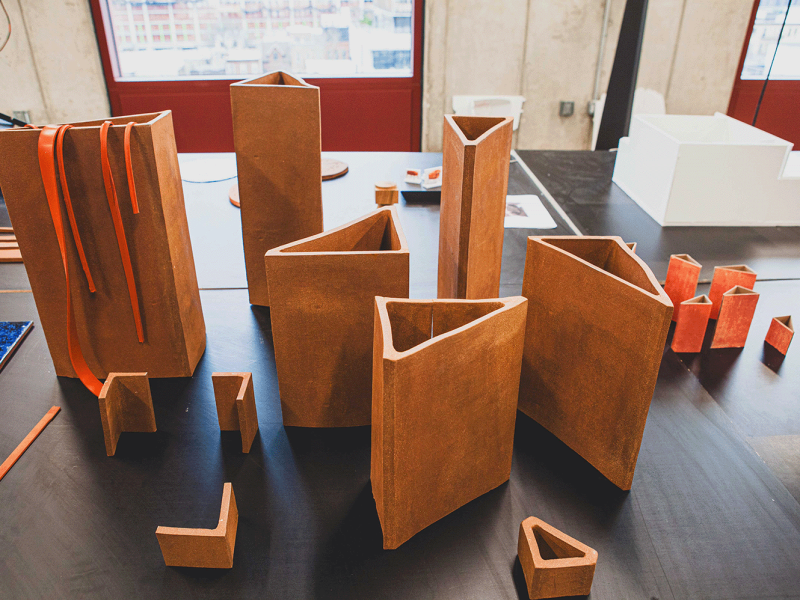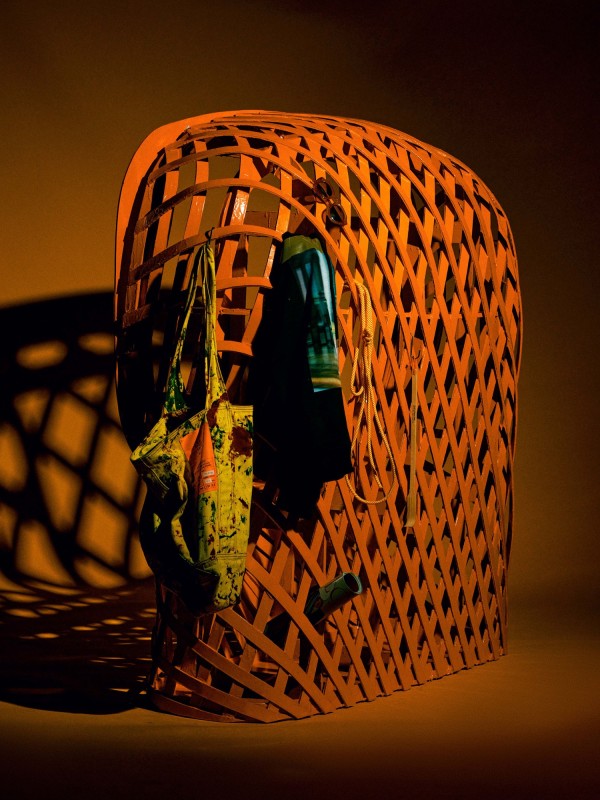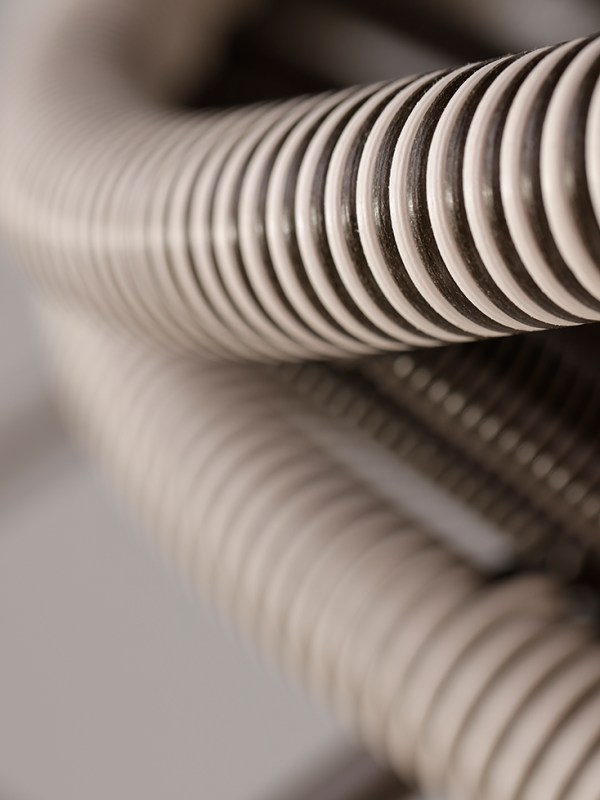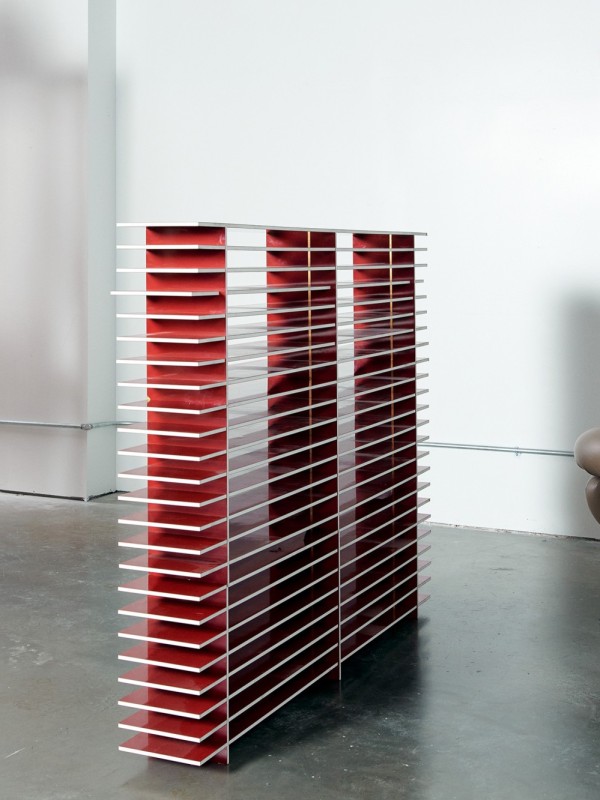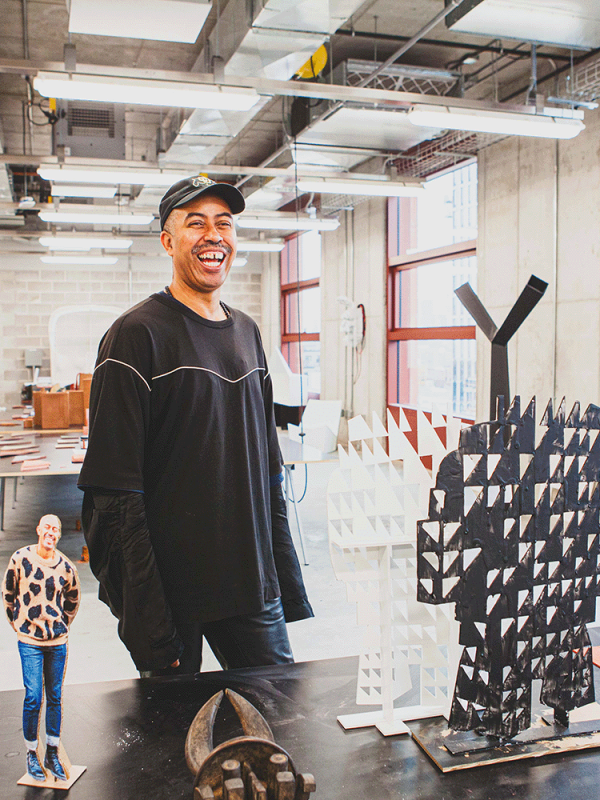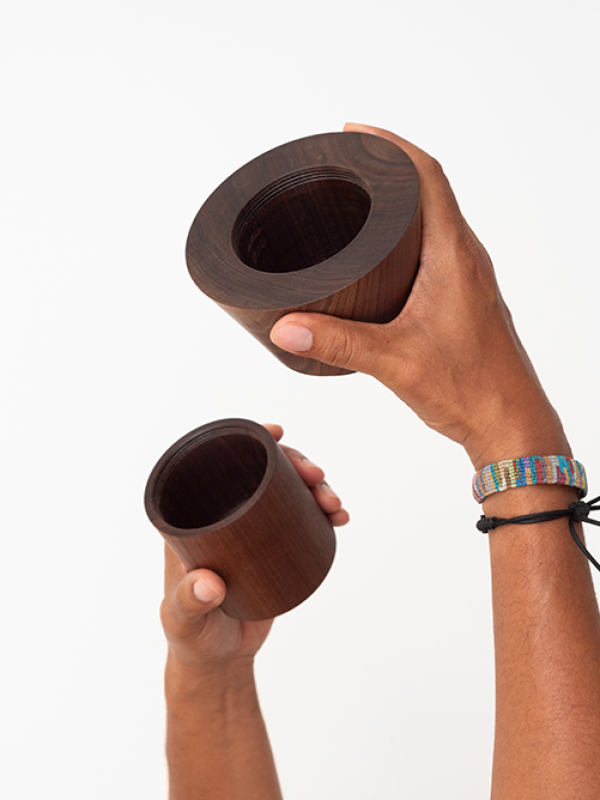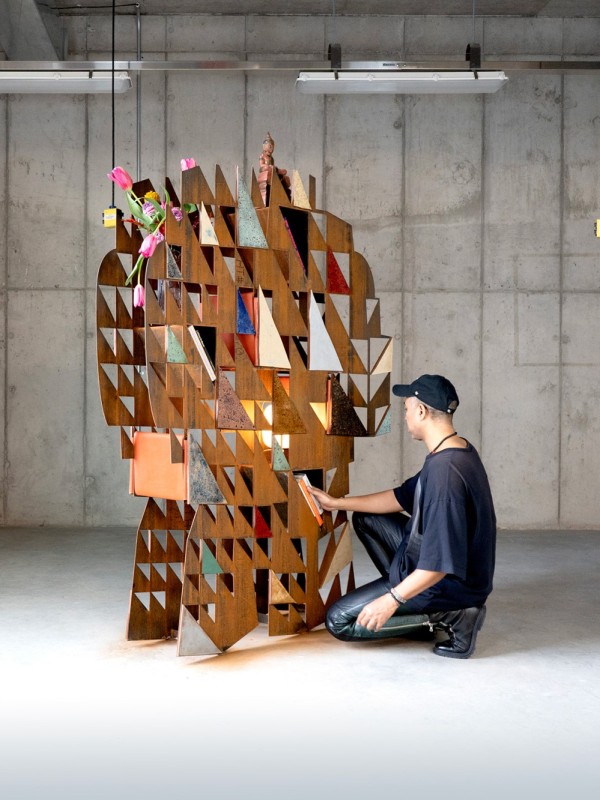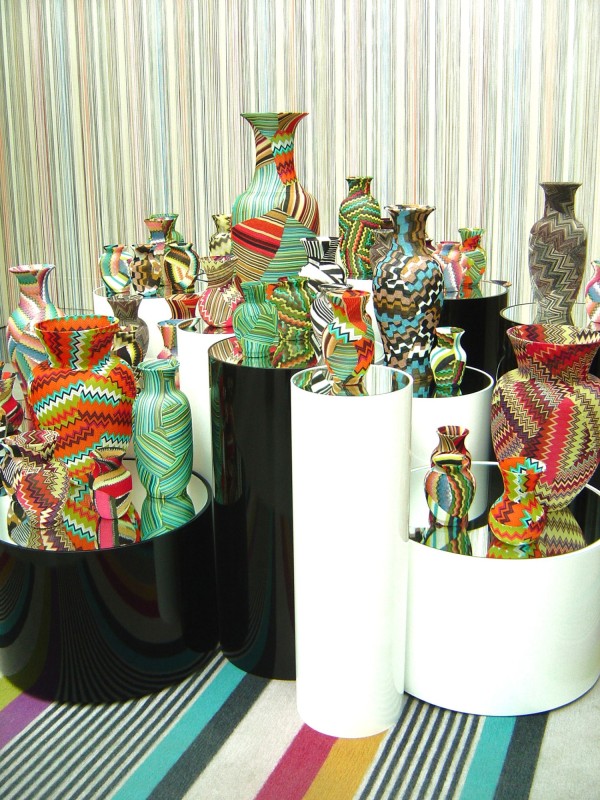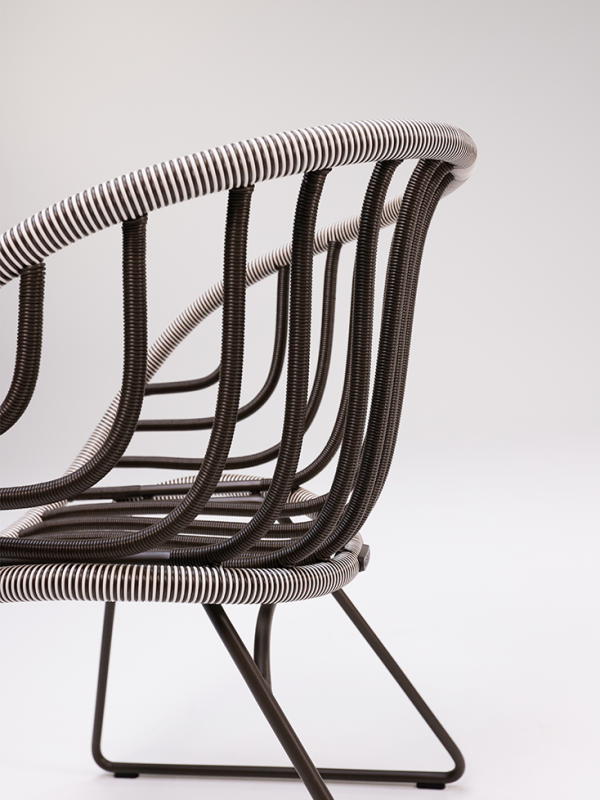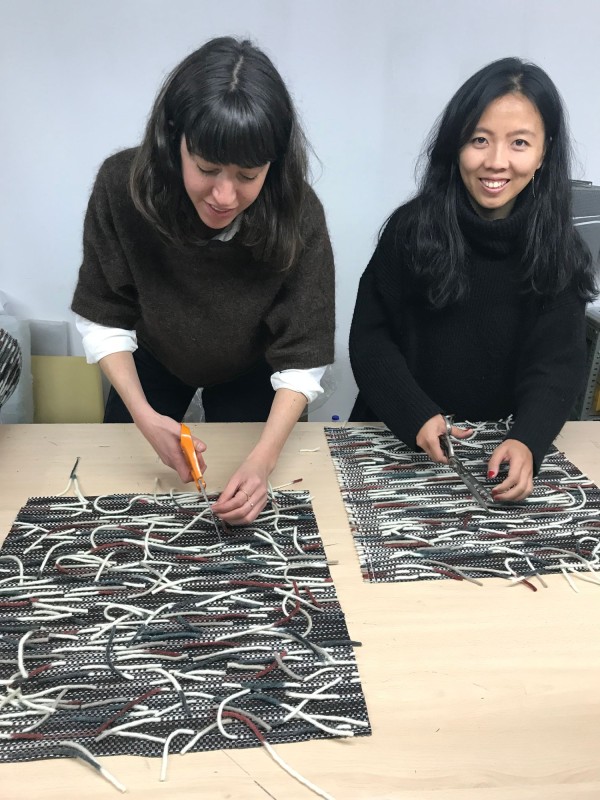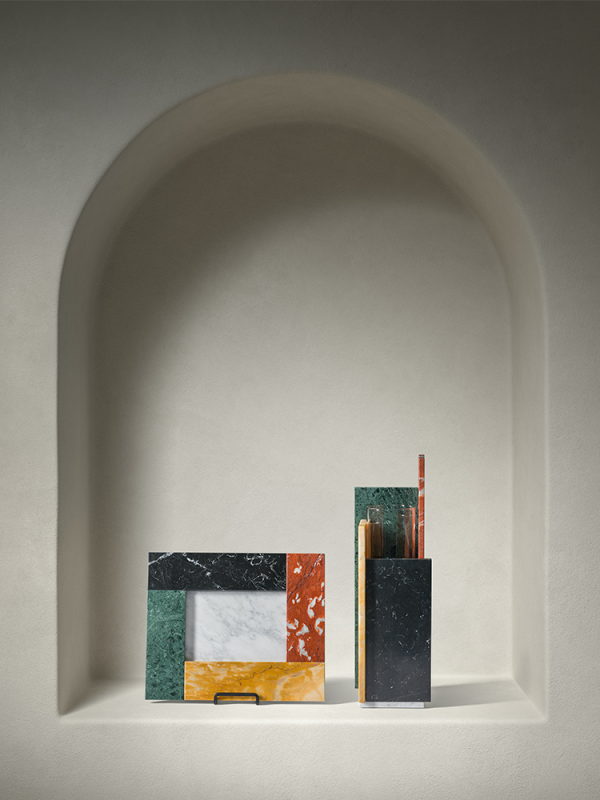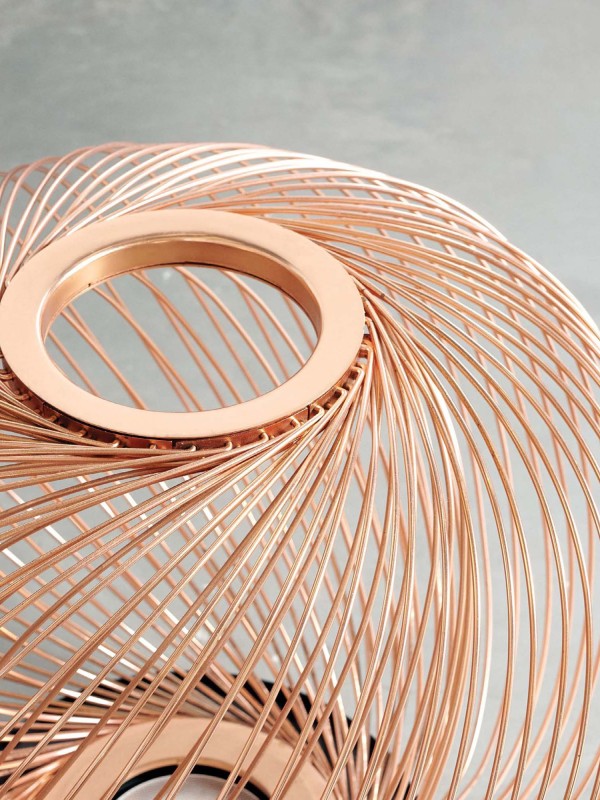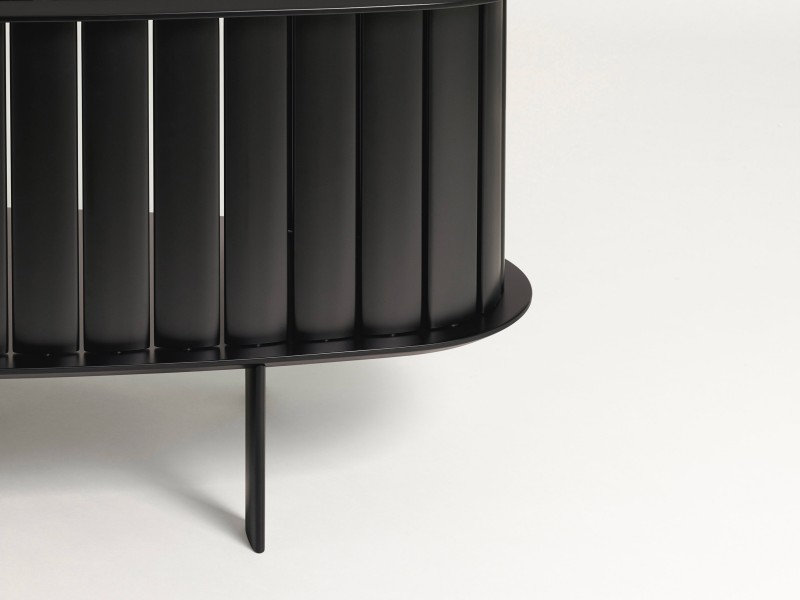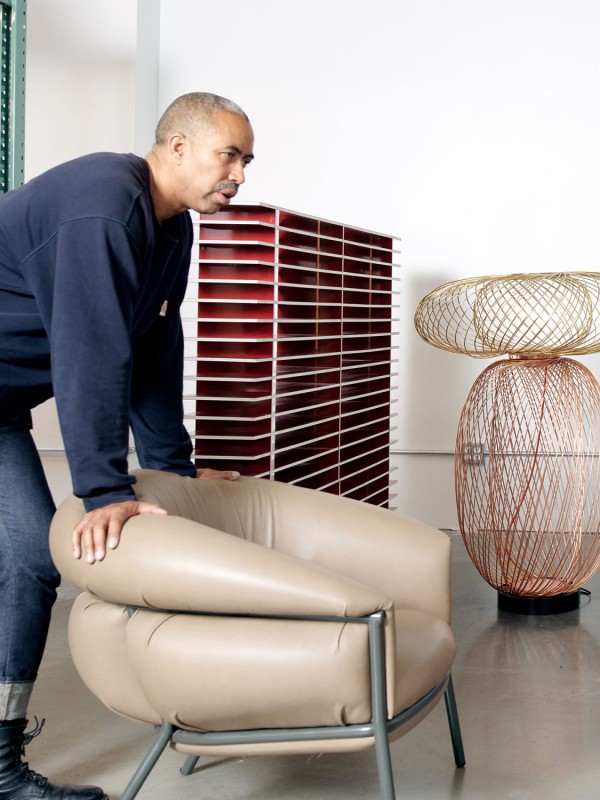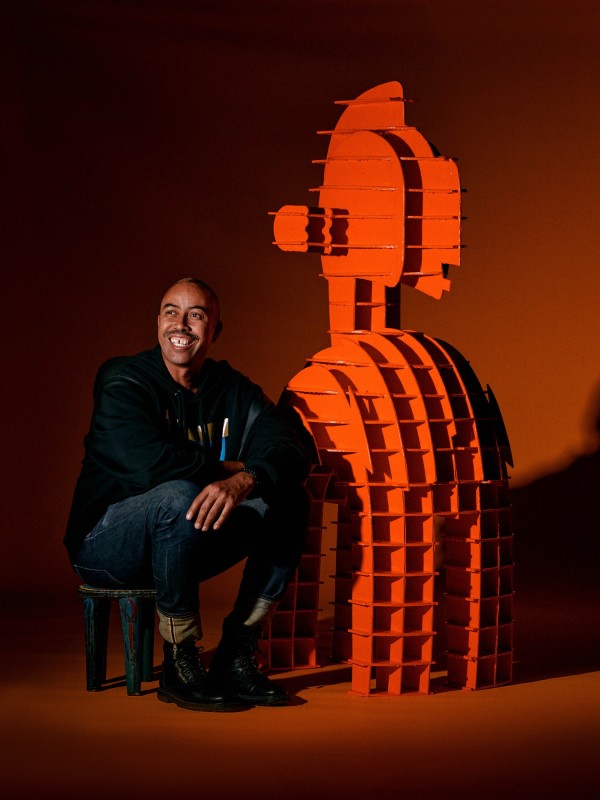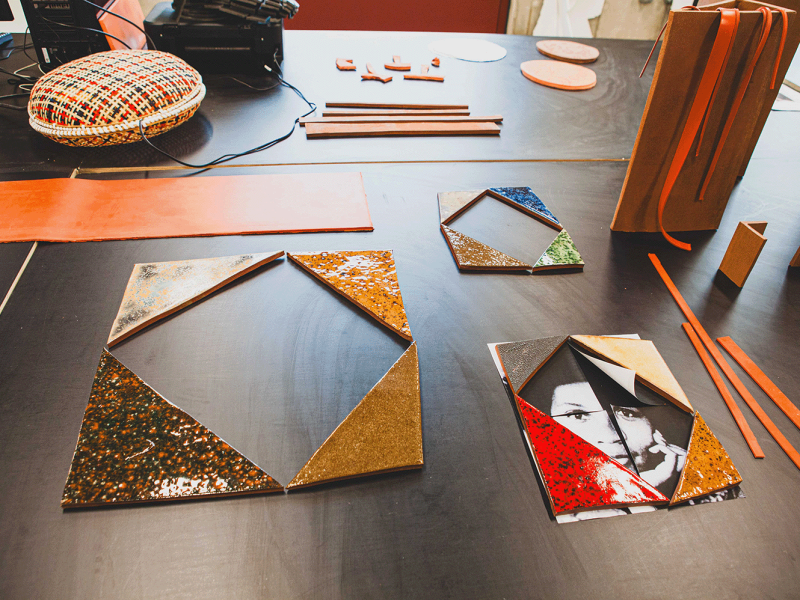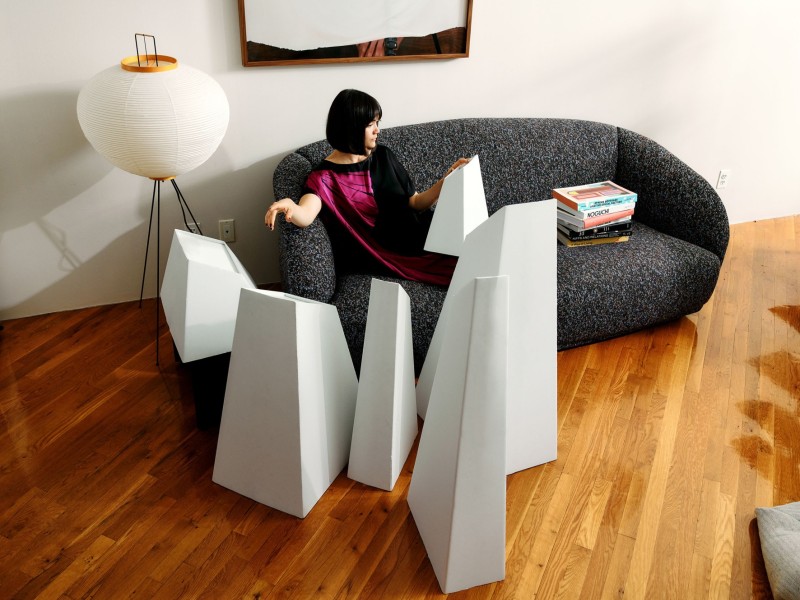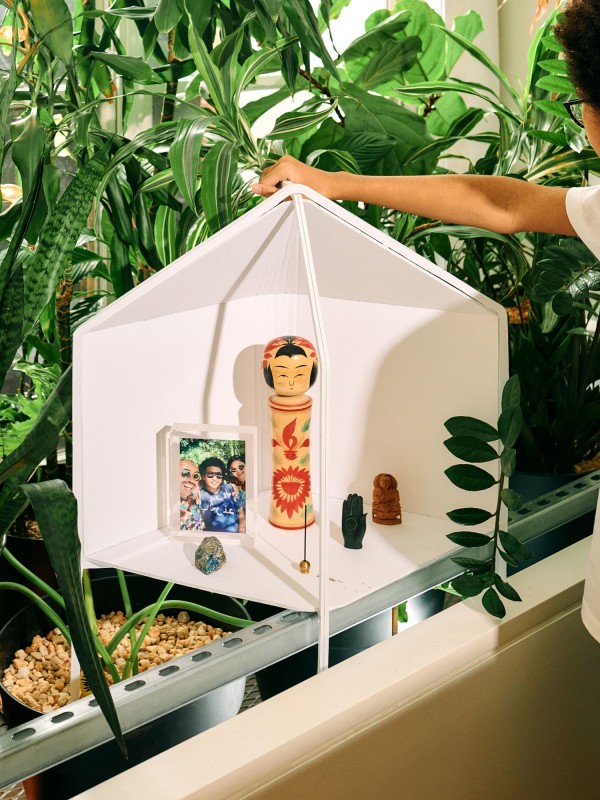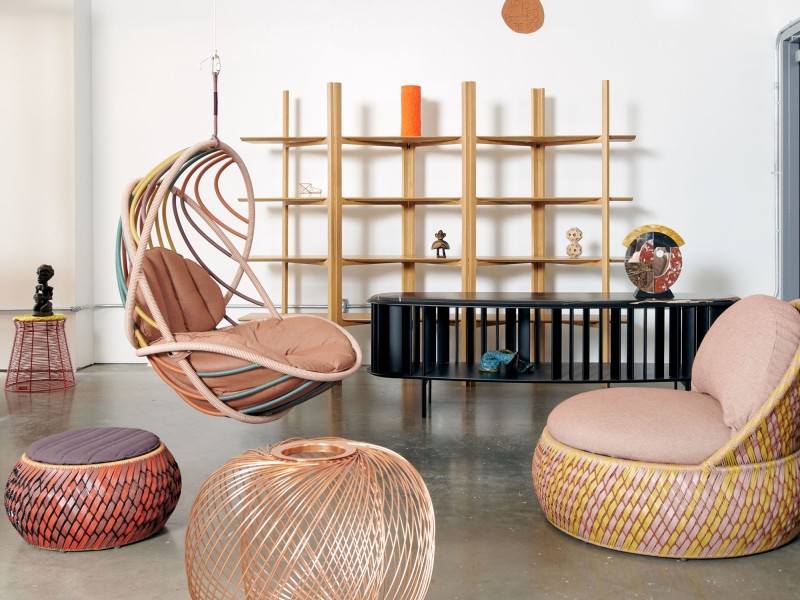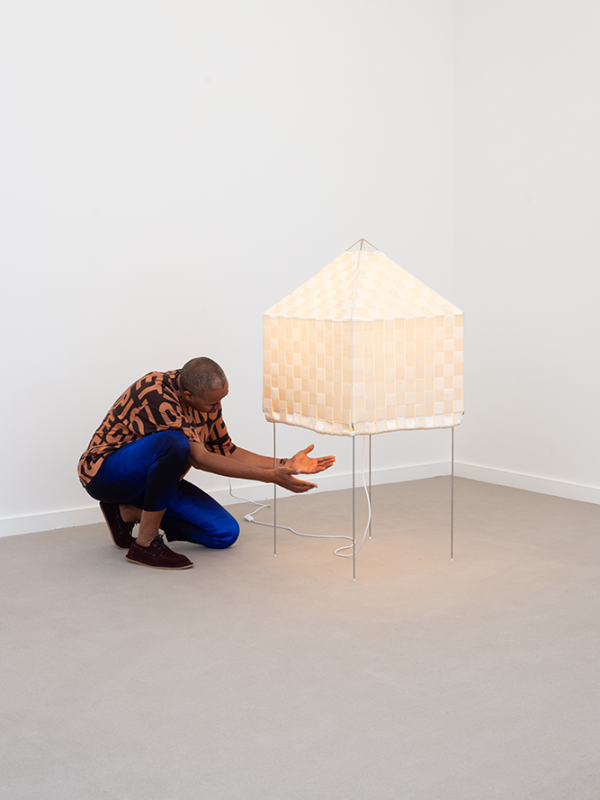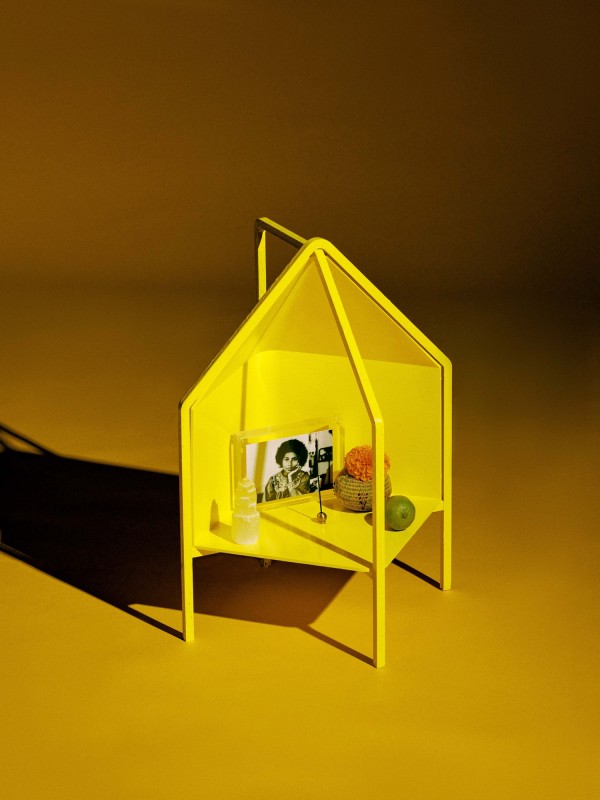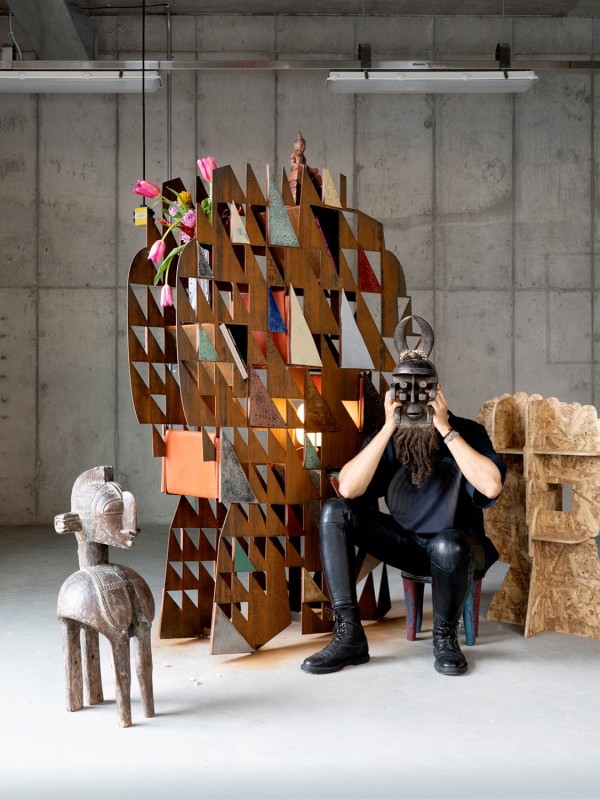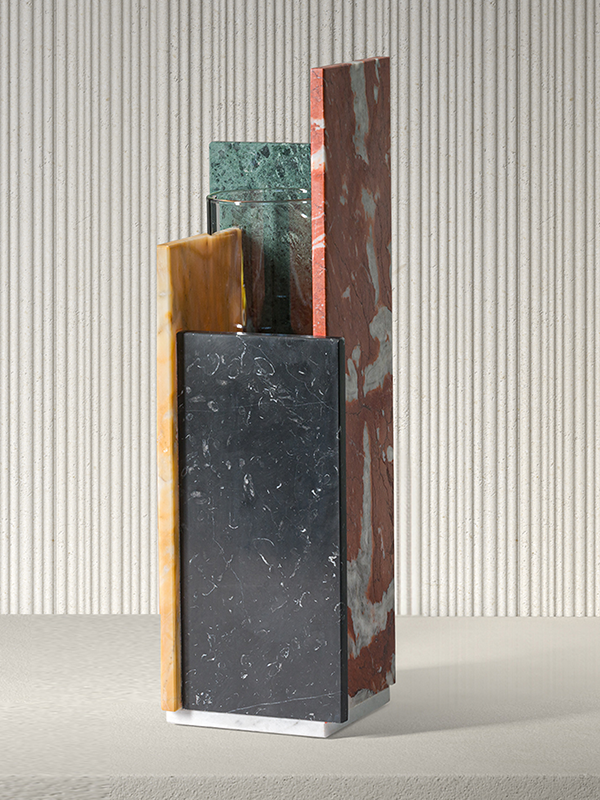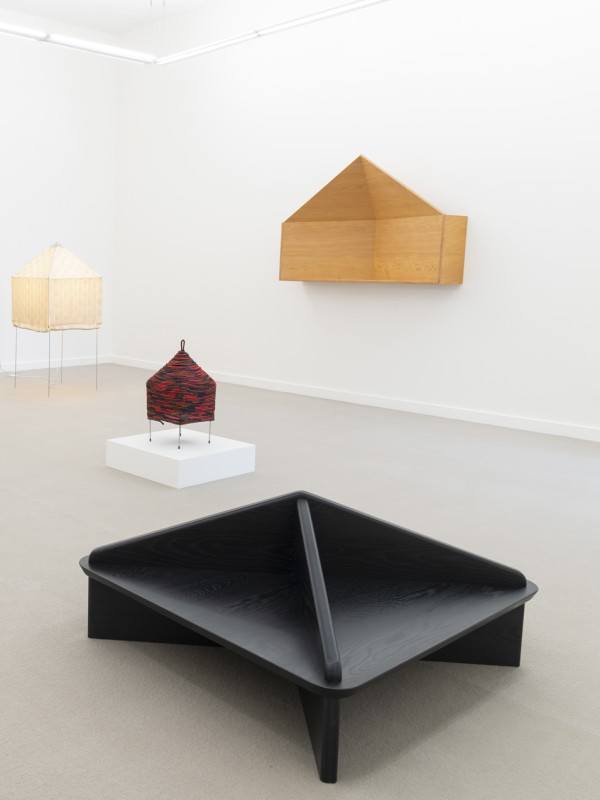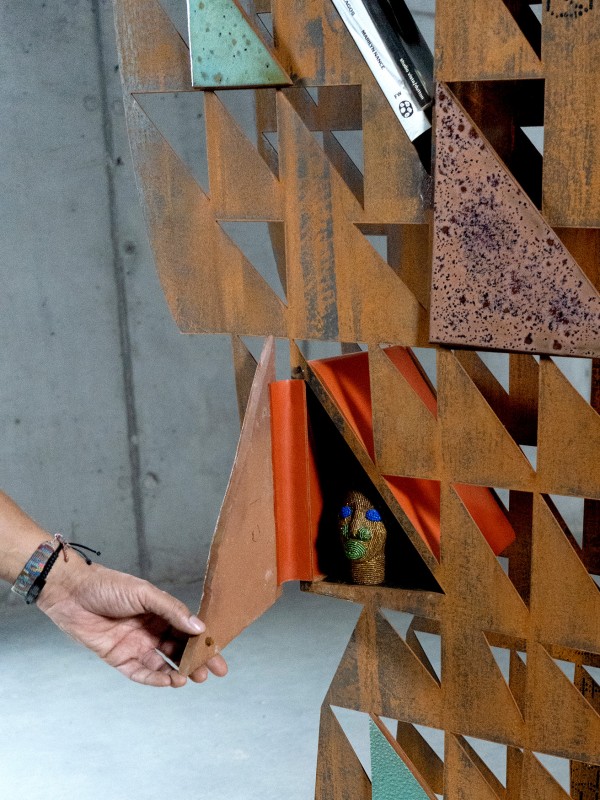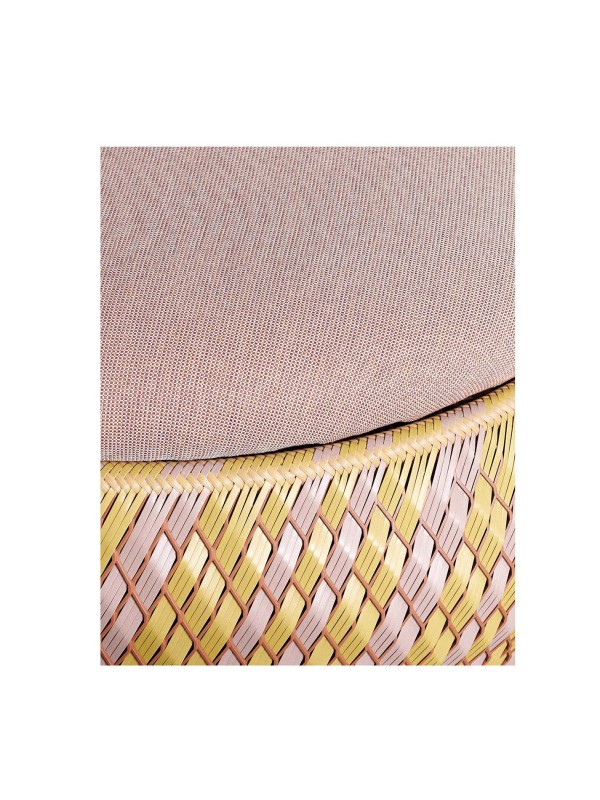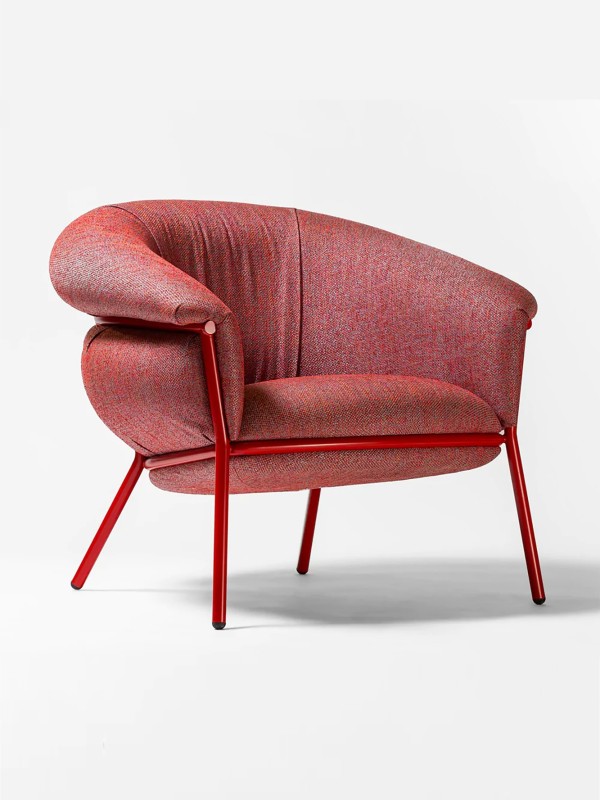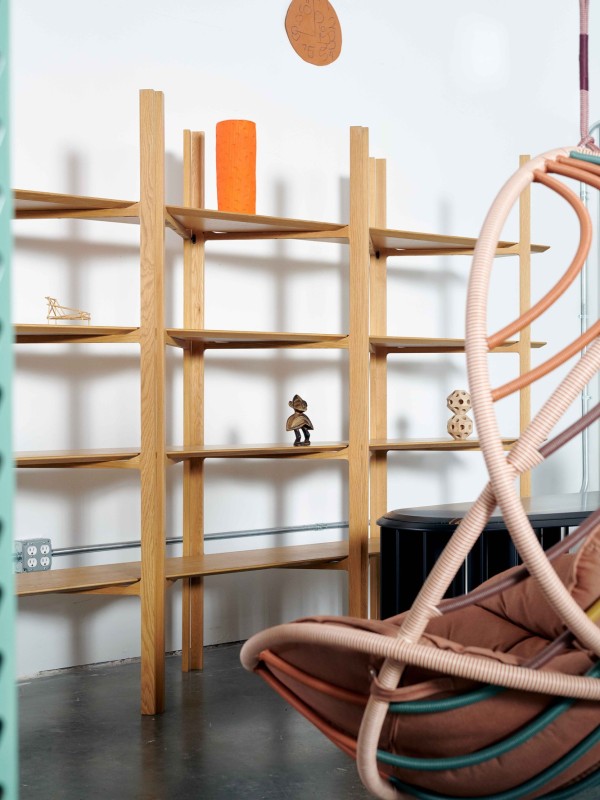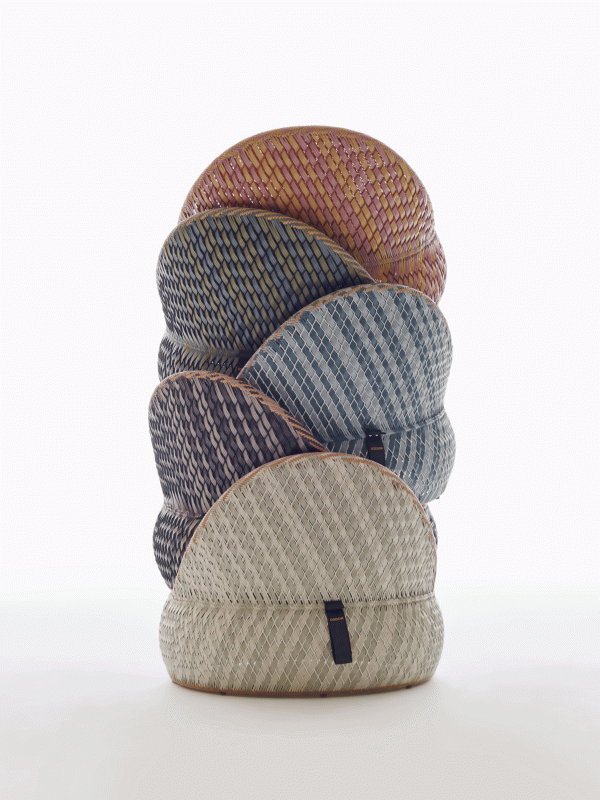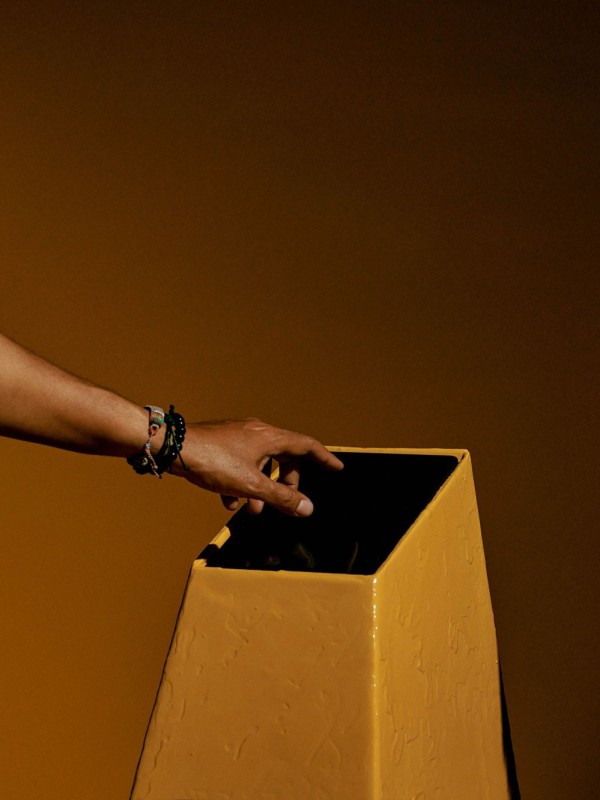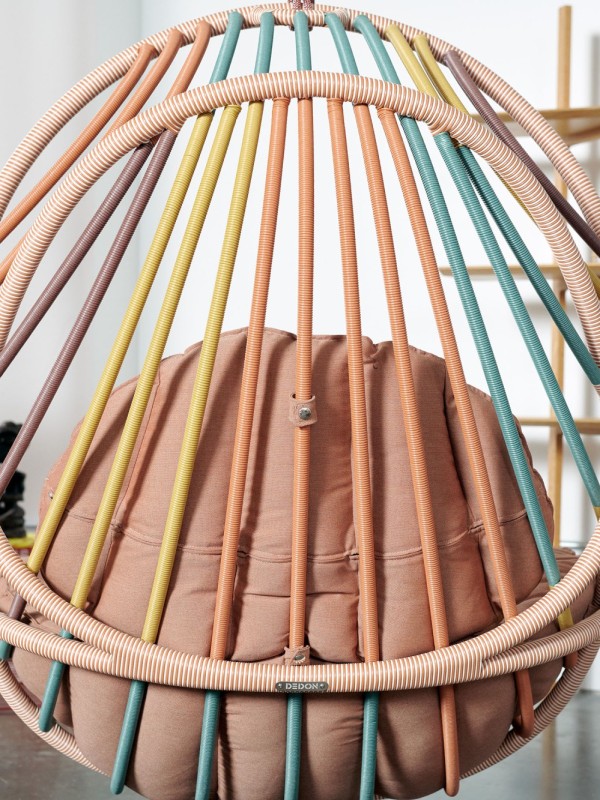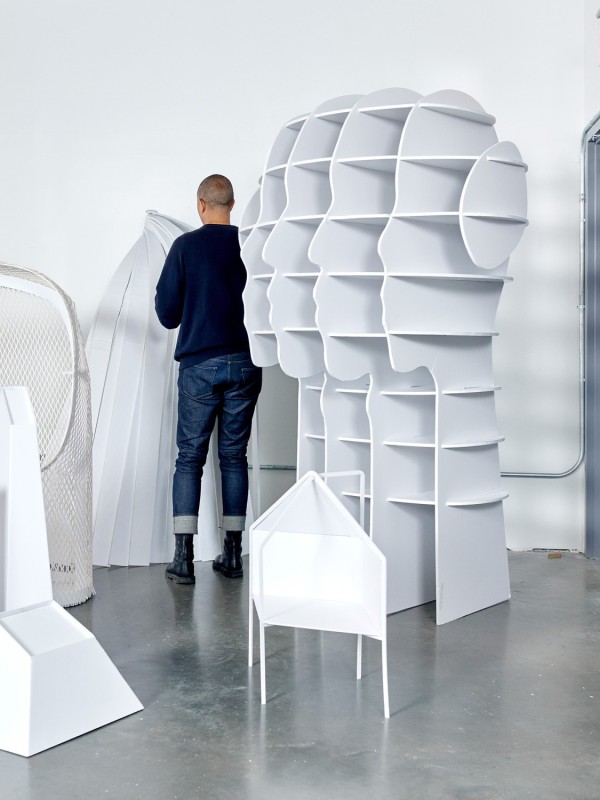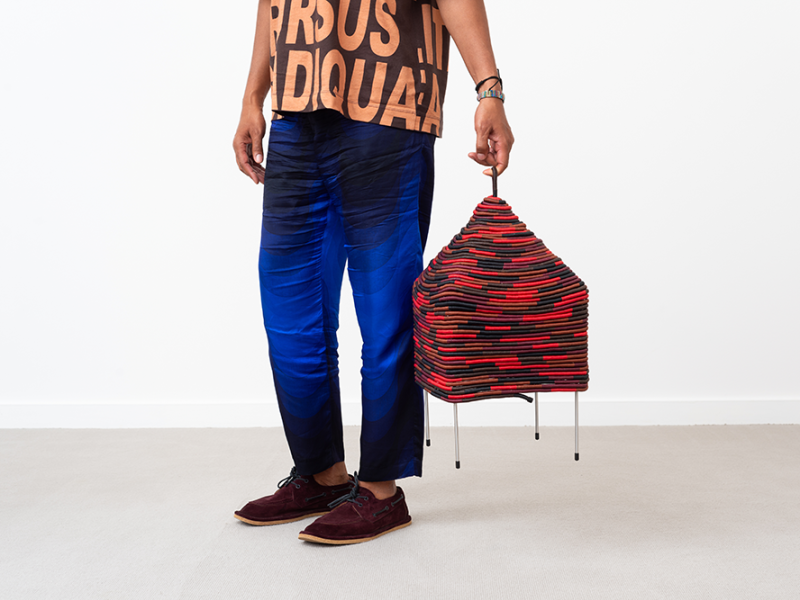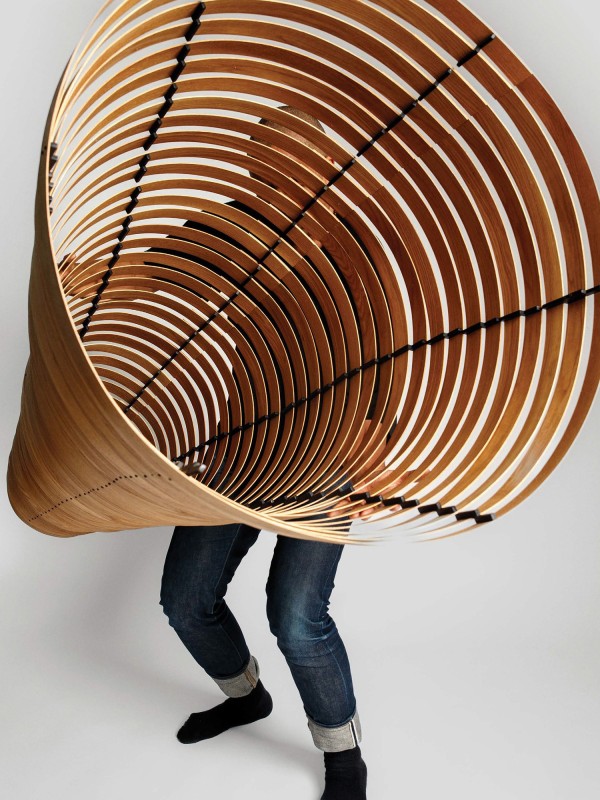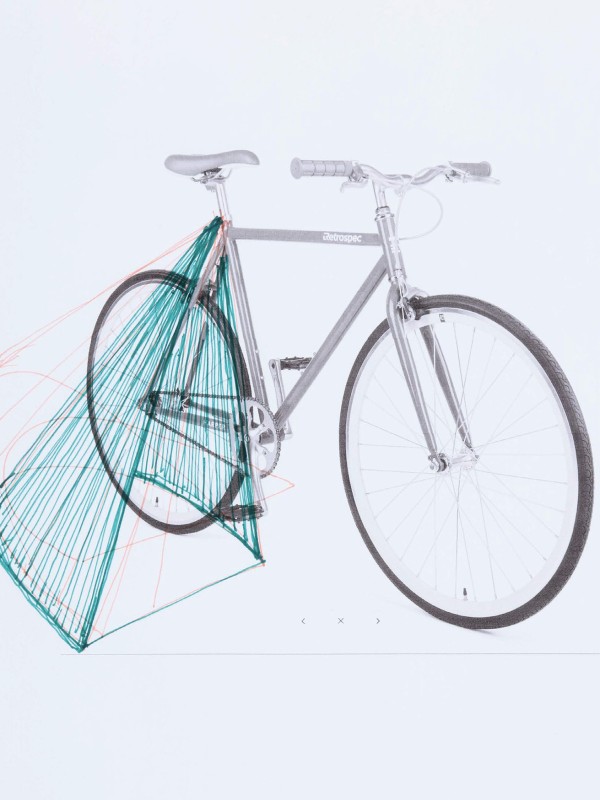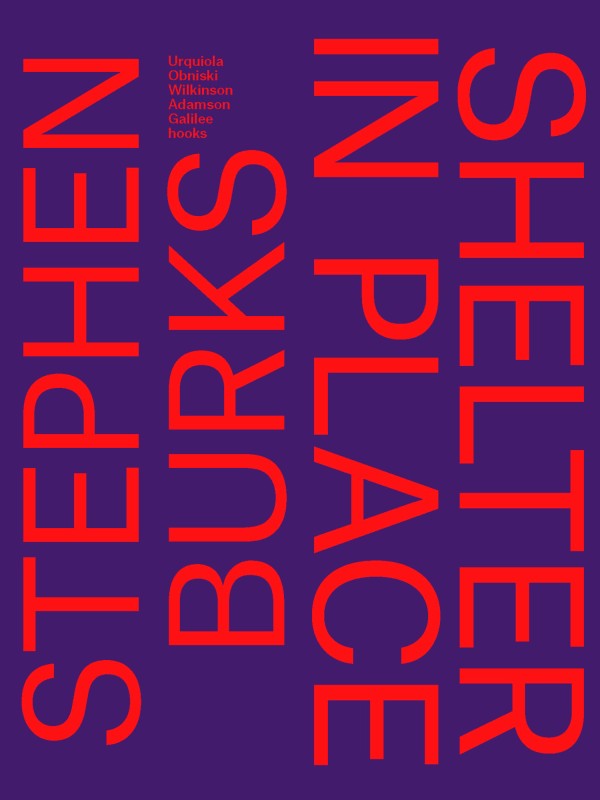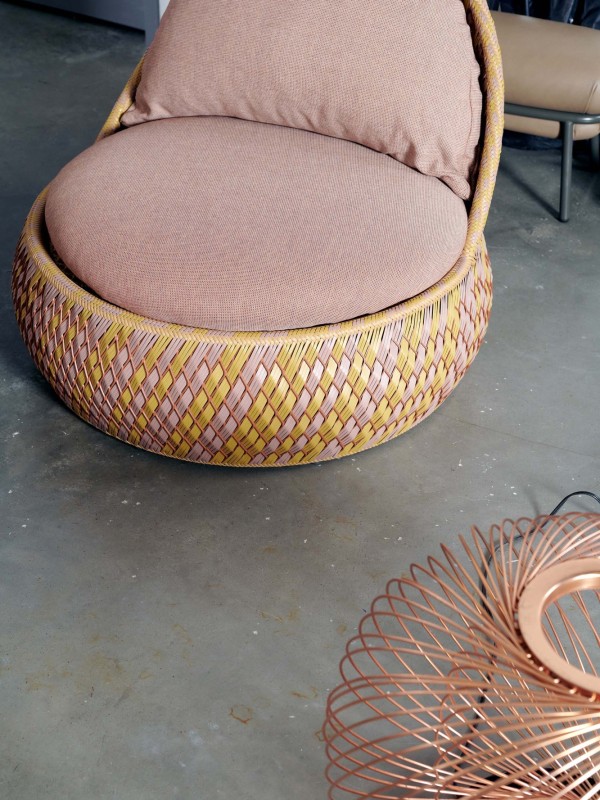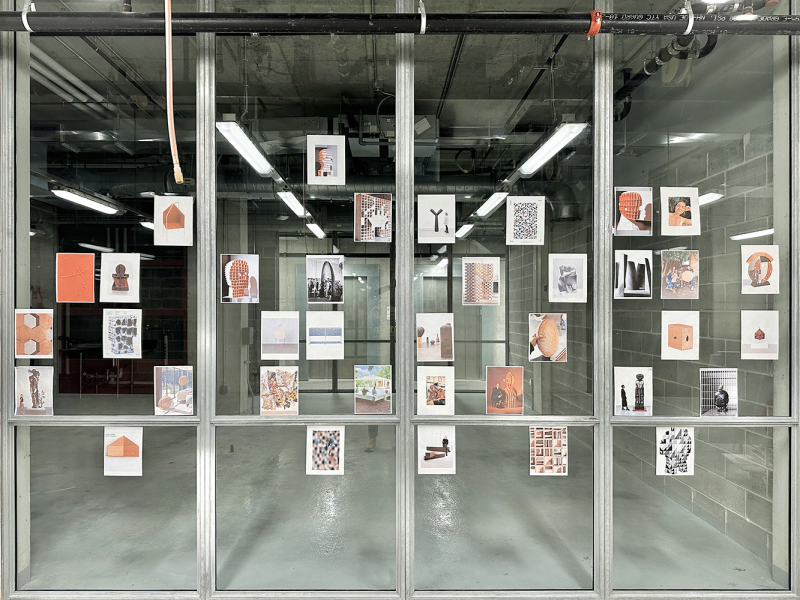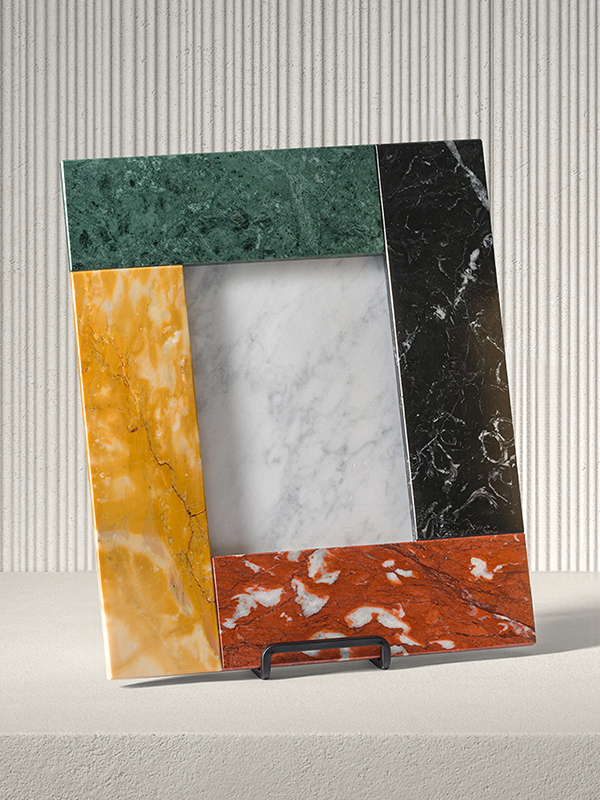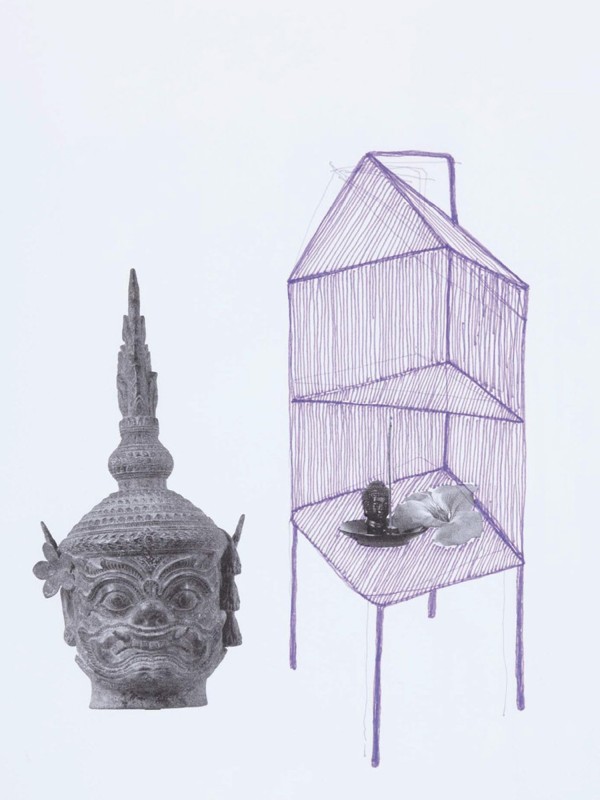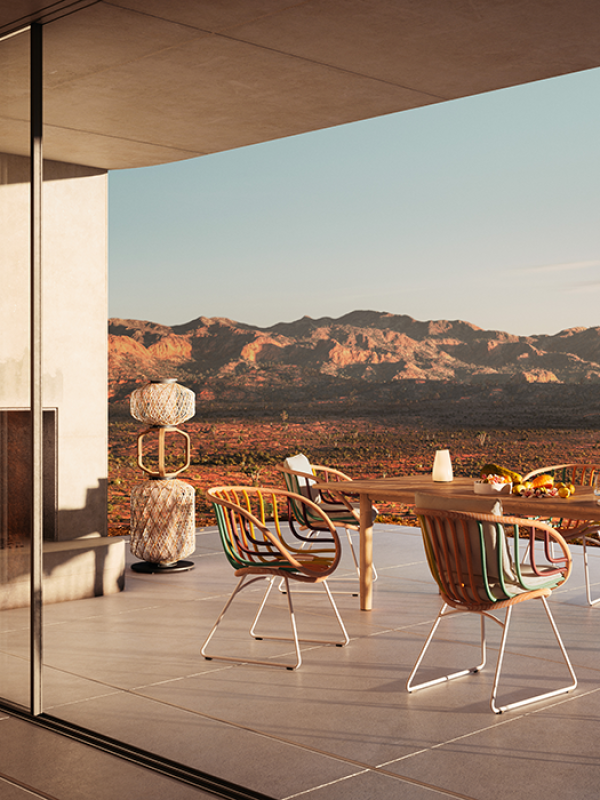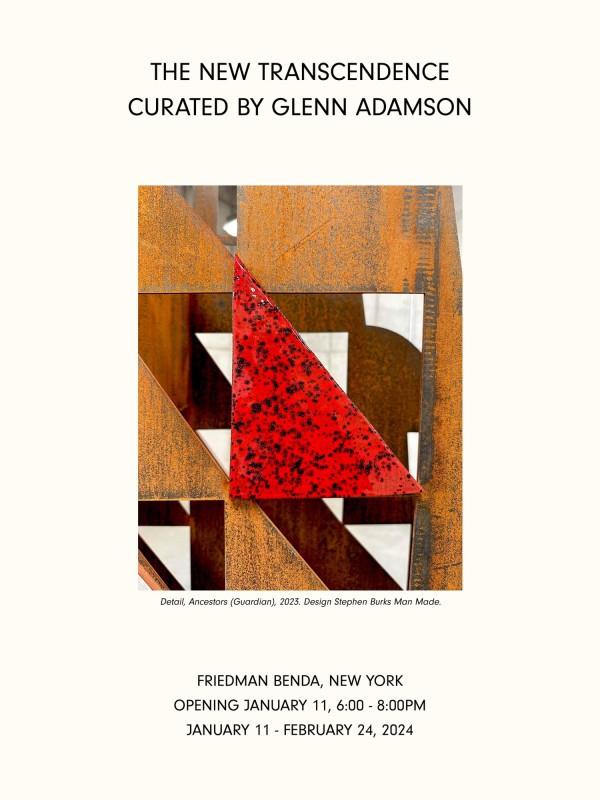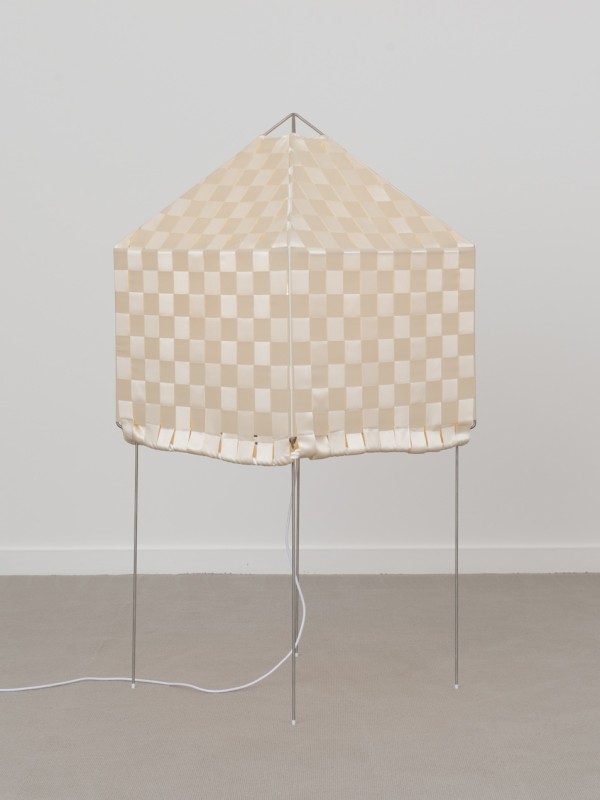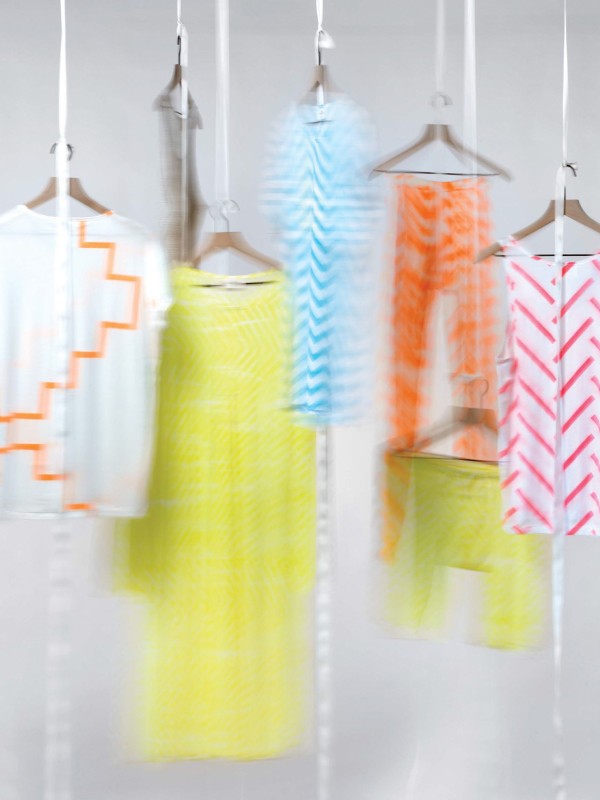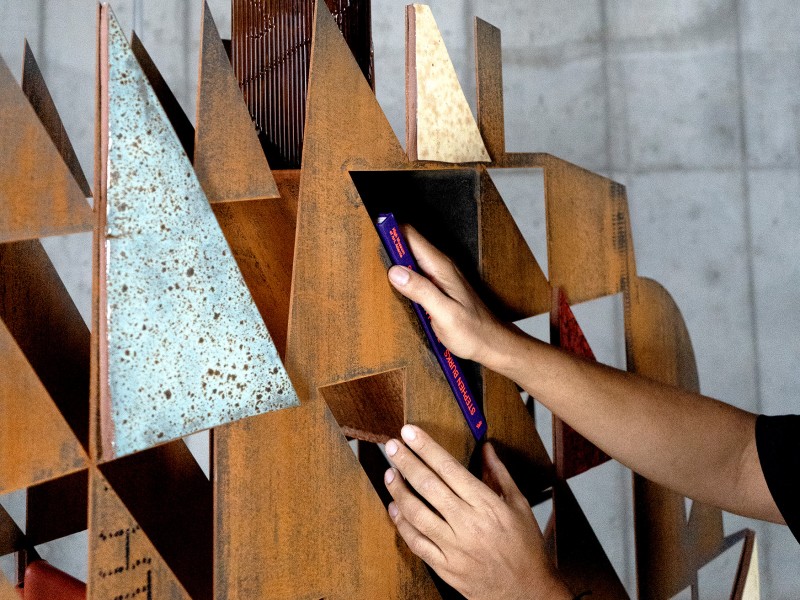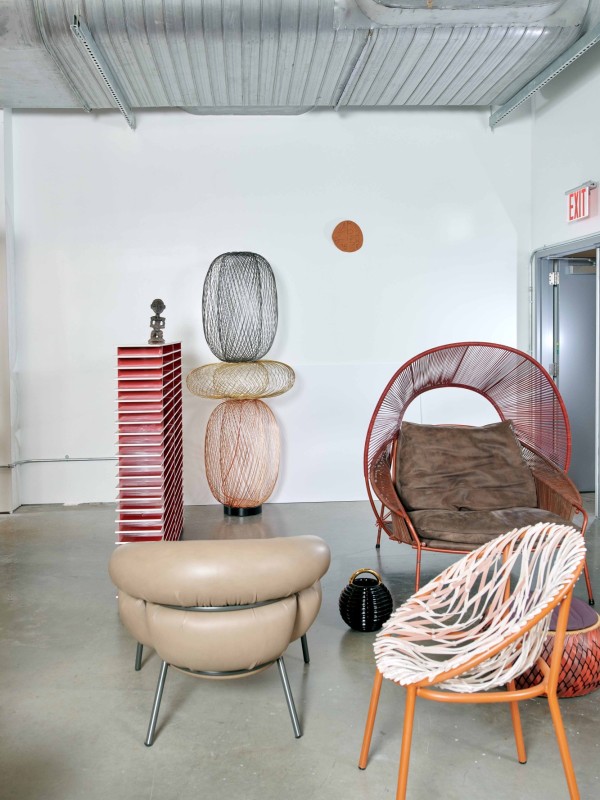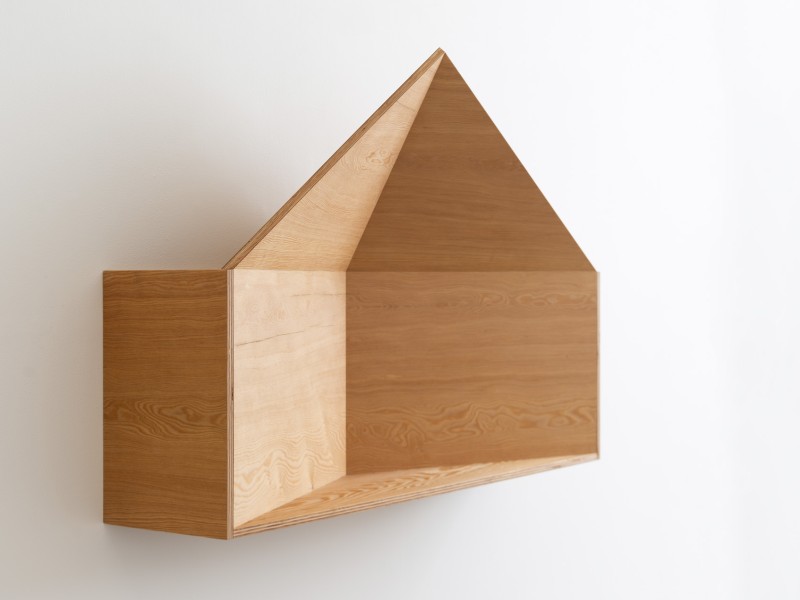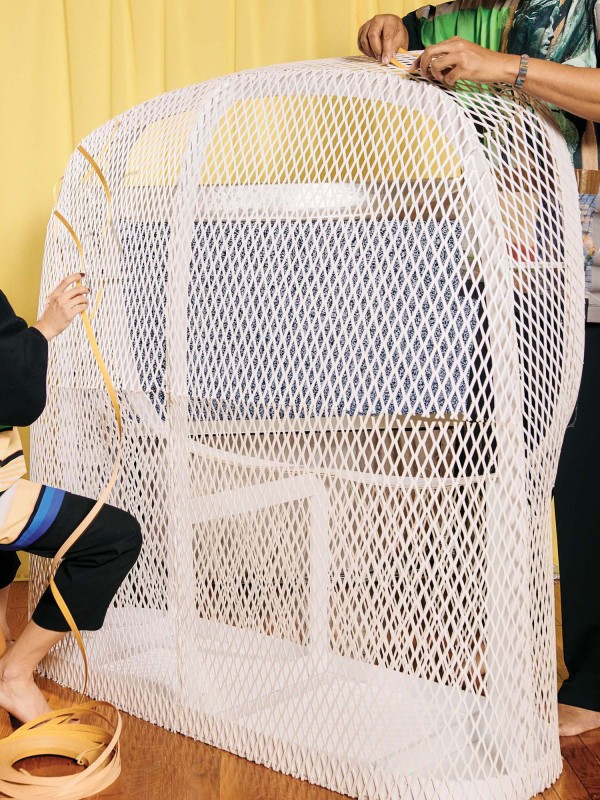About
Stephen Burks Man Made is a hands-on collaborative design studio deeply invested in the transformative power of craft techniques that challenge the limits of new technologies within industrial production.
We believe in a pluralistic vision of design that is inclusive of all cultural perspectives and backgrounds.
We bring the hand to industry through a community-driven, workshop-based practice.
Our projects include furniture, lighting, interiors, exhibitions, and product design.
We are Stephen Burks (Principal), Malika Leiper (Cultural Director), Vara Yang (Design Consultant), and Fridolin Jeger (Design Assistant).
Our solo exhibition Stephen Burks: Shelter in Place, formerly at the High Museum of Art in Atlanta (September 16, 2022 - March 5, 2023) is part acclaimed mid-career survey and part commissioned speculative project presenting the last decade of professional practice alongside new expressions of radical domesticity through handcrafted industrial design.
Most recently, Stephen Burks: Spirit Houses opened at Volume Gallery in Chicago and Stephen Burks: Shelter in Place (November 19. 2023 - April 16, 2024) opened at the Philadelphia Museum of Art where Stephen became the first African American to receive the Collab Design Excellence Award.
Follow us on Instagram @stephenburksmanmade and contact us at info@stephenburksmanmade.com.
Stephen Burks
Chicago native, Stephen Burks is an industrial designer, product development consultant, and educator whose innovative approach to design synthesizes craft, community, and industry. Independently and through association with various non-profits, he has collaborated with artisans and craftspeople in over ten countries on six continents. His socially engaged practice seeks to broaden the limits of design consciousness by challenging who benefits from and participates in contemporary design.
Stephen and his studio, Stephen Burks Man Made, have been commissioned by many of the world’s leading design-driven brands to develop collections that engage hand production as a strategy for innovation to express a more pluralistic vision of design including BD Barcelona, Cappellini, Dedon, MASS Design Group, Missoni, & Roche Bobois.
He has had solo exhibitions and led curatorial projects at the Studio Museum in Harlem (Stephen Burks Man Made, 2011), the Museum of Art & Design (Stephen Burks, Are You a Hybrid, 2011), and the High Museum of Art (Stephen Burks: Shelter in Place, 2022).
He has been visiting faculty and a strategic consultant to academic institutions around the globe and taught architecture and design at Berea College, Columbia University GSAPP, ECAL, the University of Arkansas Fay Jones School of Architecture & Design, and the Harvard University Graduate School of Design.
Stephen is the only African-American to win the Smithsonian Cooper Hewitt National Design Award in Product Design and the only industrial designer to be awarded the prestigious Loeb Fellowship at the Harvard Graduate School of Design.
Malika Leiper
Originally from Cambodia, Malika Leiper is interested in the culture of design across various disciplines with a particular focus on emergent contexts in Southeast Asia.
After completing her master’s in urban planning at Harvard’s Graduate School of Design, she consulted with restaurants, non-profits, local governments, and museums on research and strategies to build creative cultural capacity, often through public programming and community engagement.
She approaches design as a collaborative process of translating knowledge and insights from different worlds into one common language through technical, moral and utopian applications.
Most recently, Malika has contributed to Disegno Journal #34 as a Het Nieuwe Instituut inaugural emerging writing fellow with her first published short story, When The Words Don't Exist.
Vara Yang
Vara Yang joined Stephen Burks Man Made as an industrial designer in New York in 2017.
Before working at Stephen Burks Man Made, she worked with several startups helping them bring their products and services to the market, including smart home devices, smartwatches, smart jewelry, and 3D printers.
Now an independent consultant based in Rotterdam, she continues to work with the studio on projects at various scales from furniture design to packaging to exhibitions.
Vara received her bachelor’s in design engineering from National Cheng Kung University in Taiwan and her master’s in Industrial Design from the Rhode Island School of Design.
thinking
On New Cosmologies: Stephen Burks Approaches the Sacred
Najha Zigbi-Johnson for Volume Gallery
Ibá Egbe Orun
Ibá Tototo
Each morning I make my way to the large east-facing windows overlooking the Harlem River. Sage, photos of my Beloveds, candles, water and items too sacred to name adorn my makeshift altar- an antique wooden liquor stand turned “spirit house.” Nothing about this repurposing of the mundane feels sacrilegious, yet the irony of a liquor stand turned into an altar is not lost on me. Imbued with the stories it holds and lives it has lived, my altar has become the most potent part of my home, and the space that grounds me in a sense of gratitude and power.
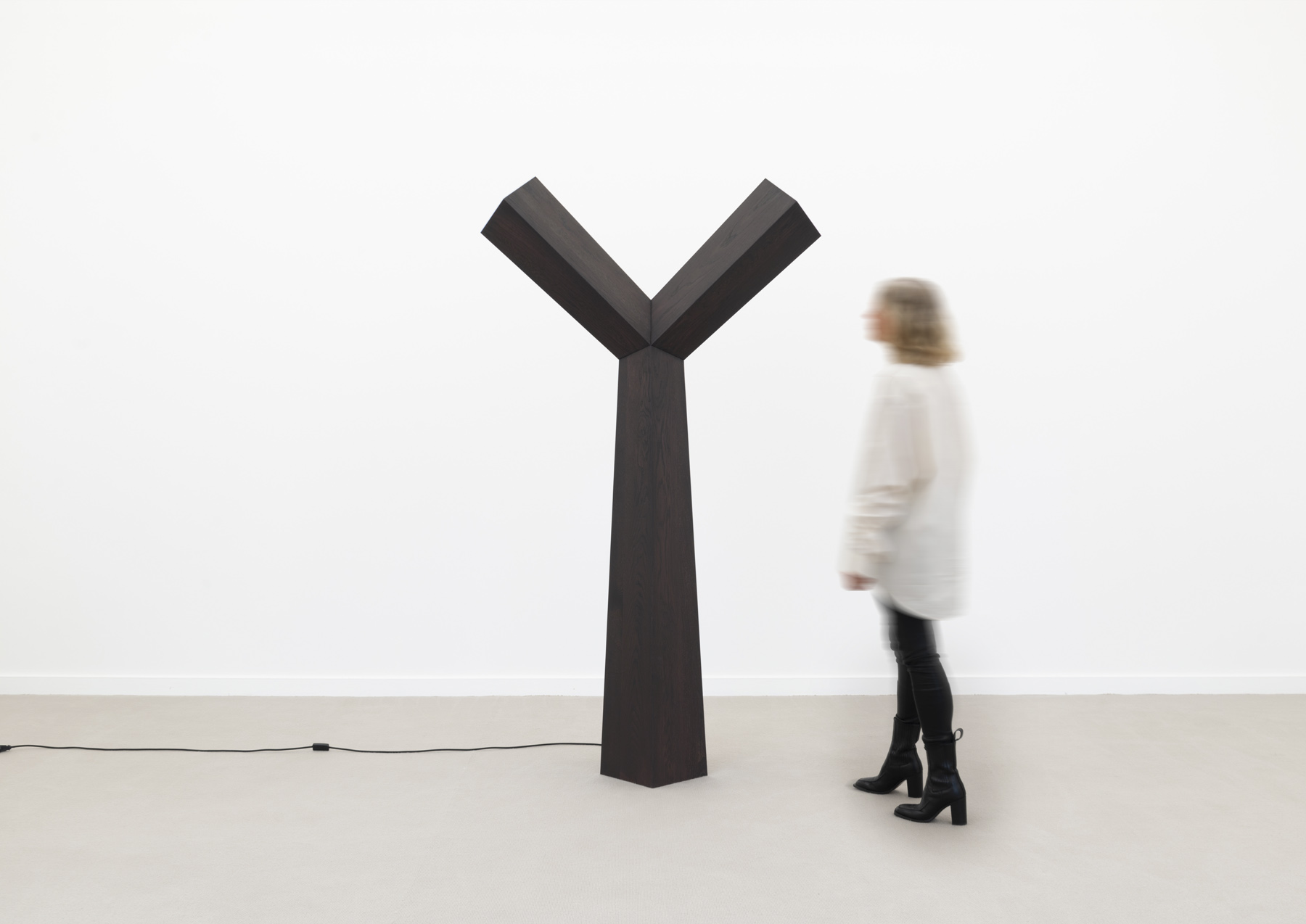
As the morning sun bathes my altar in its bright light, I sit at its feet and recite a series of Yorùbá greetings, paying homage to those who came before me, my family, teachers, and comrades whose wisdom shapes my life. As a student still early in my journey and understanding of the Yorùbá religio-spiritual practice Ifá, I have learned to recite this compulsory and ritualistic oral poetry each morning as a way to honor and affirm the spiritual and ancestral powers that guide and inform all aspects of my sentience and karmic destiny. For over five thousand years, peoples across Yorùbáland, consisting of modern day Togo, Benin, and Nigeria have recited Iba’s with the morning sun. It is a daily practice that predates all Abrahamic religions, the trans-Atlantic slave trade, modern day racial formation, colonialism and western expansion, and today increasing numbers of people across the African Diaspora look to this ancient practice and life-way for its enduring truth. As more people turn to a range of veneration practices across the globe, the necessity of creating furniture and products to meet the particular needs of modern day spiritual practitioners has emerged as a new design imperative.
It is within this spiritual and cultural context that I engage and understand the most recent work of industrial designer, Stephen Burks, who has created a collection of modern altars entitled Spirit Houses. Burks’ first spirit house was commissioned by the High Museum of Art, for his solo exhibition Stephen Burks: Shelter In Place (September 14, 2022 – March 5, 2023). The exhibition surveyed Burks’ last ten years of commercial practice and craft-based collaborations, while also speculating on the role of radical design in addressing issues of belonging, loss, race, self-care, and spirituality in the wake of global uprisings like the Black Lives Matter movement and crises like the Covid-19 pandemic.
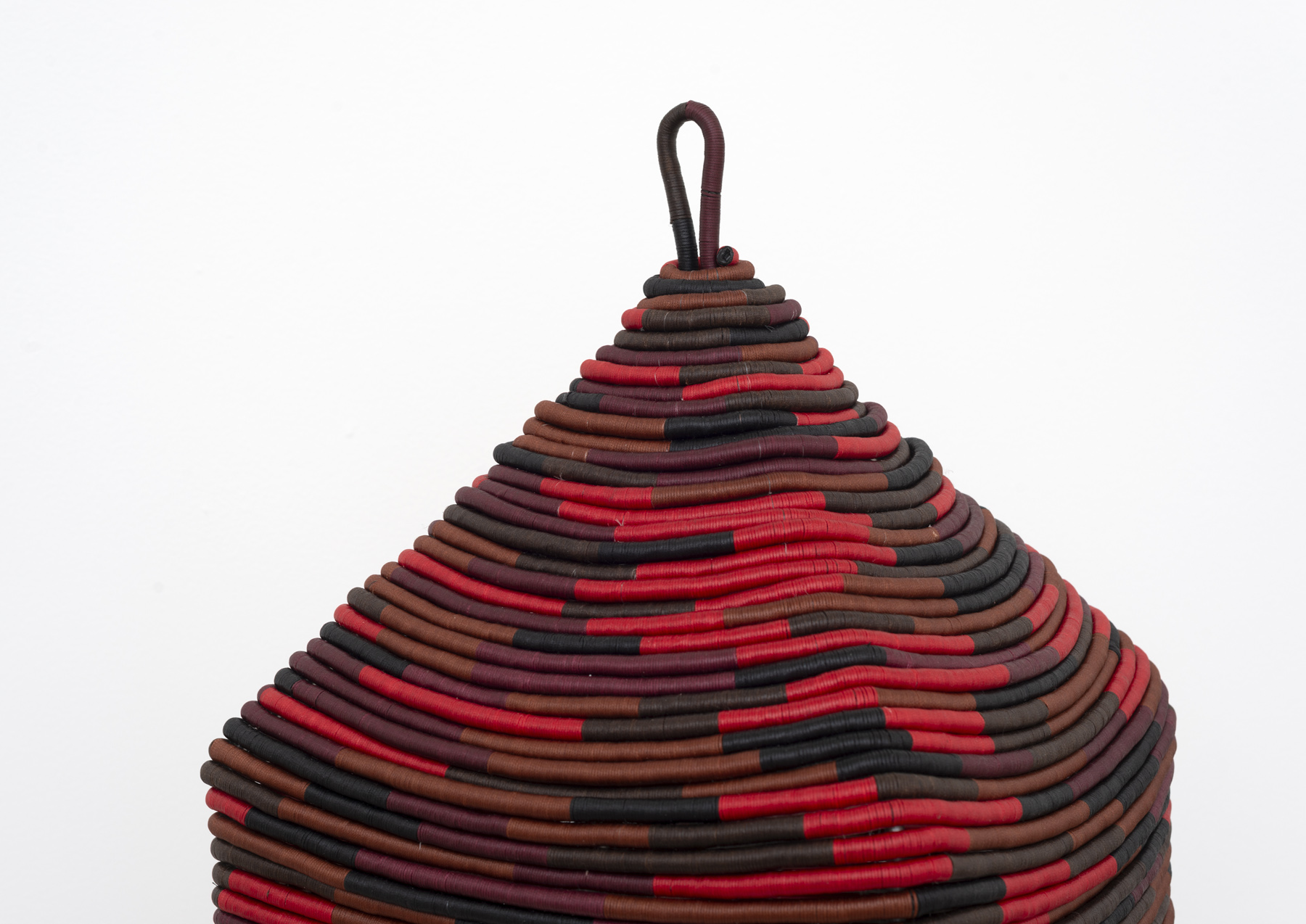
The open structure of the first publicly displayed Spirit House offers space for photographs, incense, and other sacred objects that honor the memory of loved ones who have since transitioned. In fact, this first Spirit House was exhibited in memory of the late visionary, bell hooks whose friendship and teachings were very important to Burks’ practice. Created during the midst of mass casualties and unspeakable suffering, Burks remarked during the exhibition opening, that ‘Covid-19 was and continues to be experienced as a collective moment of grief. And while many individuals were forced to transition in isolation, away from the love and comfort of family and friends, our commitment to honoring their legacies has only intensified during this experience.’ For Burks, this reflection was a catalyst that turned him deeper toward worldviews or in this case, cosmologies that ritualize practices around remembrance and root them in shared religio-cultural and ethical meaning.
Pulling from a myriad of West African and Asian religio-spiritual practices, Burks’ interpretation of the traditional spirit house exists within cosmological worldviews that affirm the dead as active, everyday participants in our world-making process. For the many peoples and cultures who exist beyond western ontology, the practice of religion cannot be separated from everyday life and the public sphere, as it informs nearly all aspects of society- from politics, social life and cultural production, to how we shape our dwellings and death rituals. These ranges of cosmological worldviews and religions (from the Yorùbá practice of Ifá to Buddhism) ground ancestral veneration and the establishment of worship temples or altars as intrinsic to the human experience. Thus, through the act of ritualized journey, prayer, and offerings— be it water, food, kola nut, liquor or incense, we may come to see how the materiality of altars and worship temples are imbued with a type of divine life and power, (or Asé in the Yorùbá tradition) propelling the human-made object away from profane insentience and toward limitless spiritual animation.
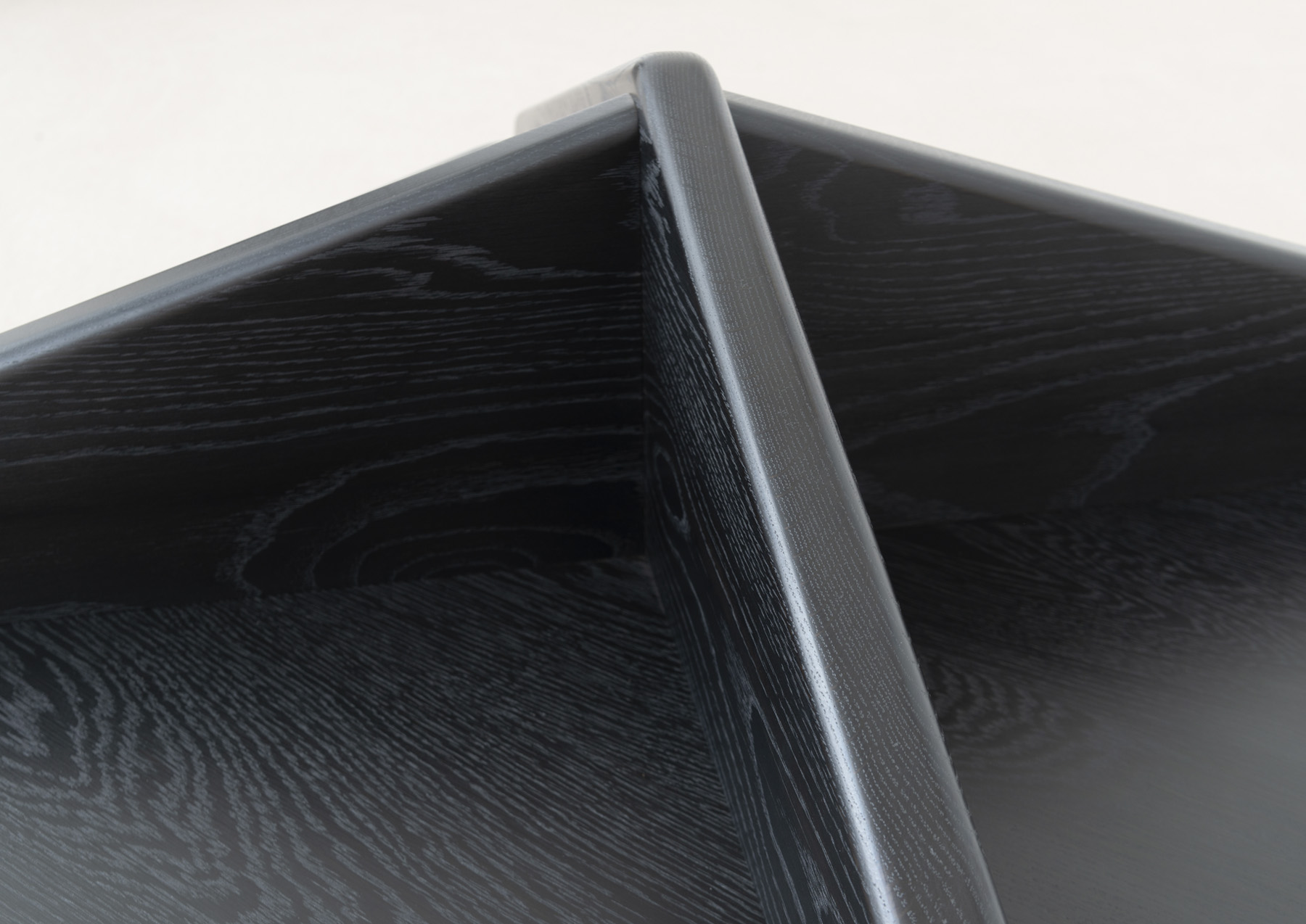
The creation of the pieces for the exhibition Spirit Houses at Volume Gallery in Chicago, Illinois (September 8 – October 28, 2023) reflects a necessary expansion and intervention into the largely secular world of industrial design that responds to and serves our everyday needs through the creation of products, furniture, and devices. Spirit Houses, in their varied forms —from a woven floor lantern, to a wall-mounted display shelf, partitioned coffee table, and ambiguous wooden container— have become both physical and metaphysical portals, allowing us to place our present lives within a temporal continuum, beginning with our ancestors and ending with future generations to come, whose lives will be informed by the choices we make today.
Burks’ multifaceted approach toward crafting Spirit Houses allows us to engage what is sacred and personal in a multitude of ways, that are both reflective of traditional altar use and expansive in their exploration of new typologies that can be imbued with spiritual sentience at the will of the user. Possibly the most recognizable is Burks’ Altar, an open-faced, minimalist plywood, wall-mounted standing height display shelf, that not only offers space for personal objects and images of remembrance, but also creates an intimate space for acoustic contemplation. Tableau, a black stained, partitioned oak coffee table allows users to honor individual familial lineages as distinct parts of a whole that converge around the low table at seating height. In this way, offerings and moments of shared meditation may be made in community, which reflects the communal act of prayer and veneration that is central to the practice of Ifá. The meaning of Ibá, “we pay homage” denotes the importance of shared communal veneration and prayer, and in this way it is understood that spirit is not something to be tended to alone and in isolation. Away from the western-colonial inclination toward hyperindividualism, Burks roots his understanding of Spirit Houses in worldviews that center interdependence and the active presence of ancestors as agents in the world. Thus Tableau, in its physicality, creates the space for us to embody and employ the meaning of Ibá as a collective act and venerative form of remembrance.
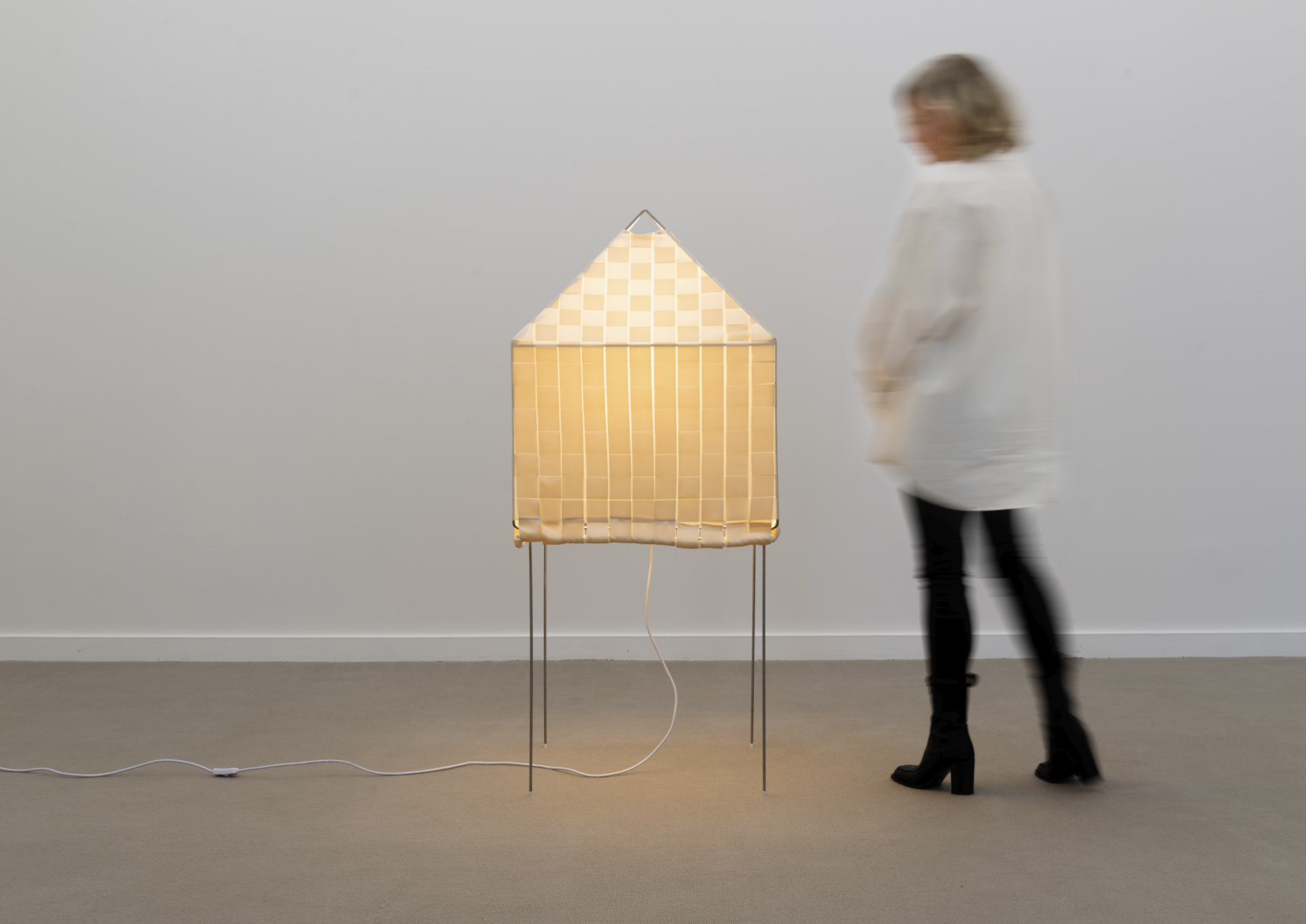
The handheld conical, cubic, cylindrical, interlocking container entitled Transformer, is interesting in that it has no defined orientation and is a collection of vessels, creating space for small sacred objects that may be understood for the faith we put in them. In keeping with the belief that the ancestors continue to move amongst the living, many religio-spiritual practices maintain food and sacred offerings as a central component of veneration practices, as a way to nurture the spirit realm and their relationship with it, so that it may reflect a form of mutuality in the give and take of wisdom, prayer, and good fortune between practitioner and ancestor. While I am inclined to see Transformer through this particular lens (as a vessel for a singular offering) it is but one interpretation of its many uses and meanings.
The collection of Spirit Houses in the exhibition also contains three distinct objects of illumination entitled Cozy, Lantern, and Ypsilon. These three Spirit Houses nod to the historical belief that the first paper lanterns made in the Buddhist tradition were to light and guide the way of Monks, while making their pilgrimages across what is now India and Nepal. Cozy is a small, warm-toned, coiled rope container for the sacred, which can be removed to allow one to interact privately with its contents. Lantern translates the traditional vocabulary of the washi paper lampshade into a large hand woven house of light, made of silk ribbons more reminiscent of an inverted basket. Its formal simplicity is buttressed by its subtly sophisticated details.
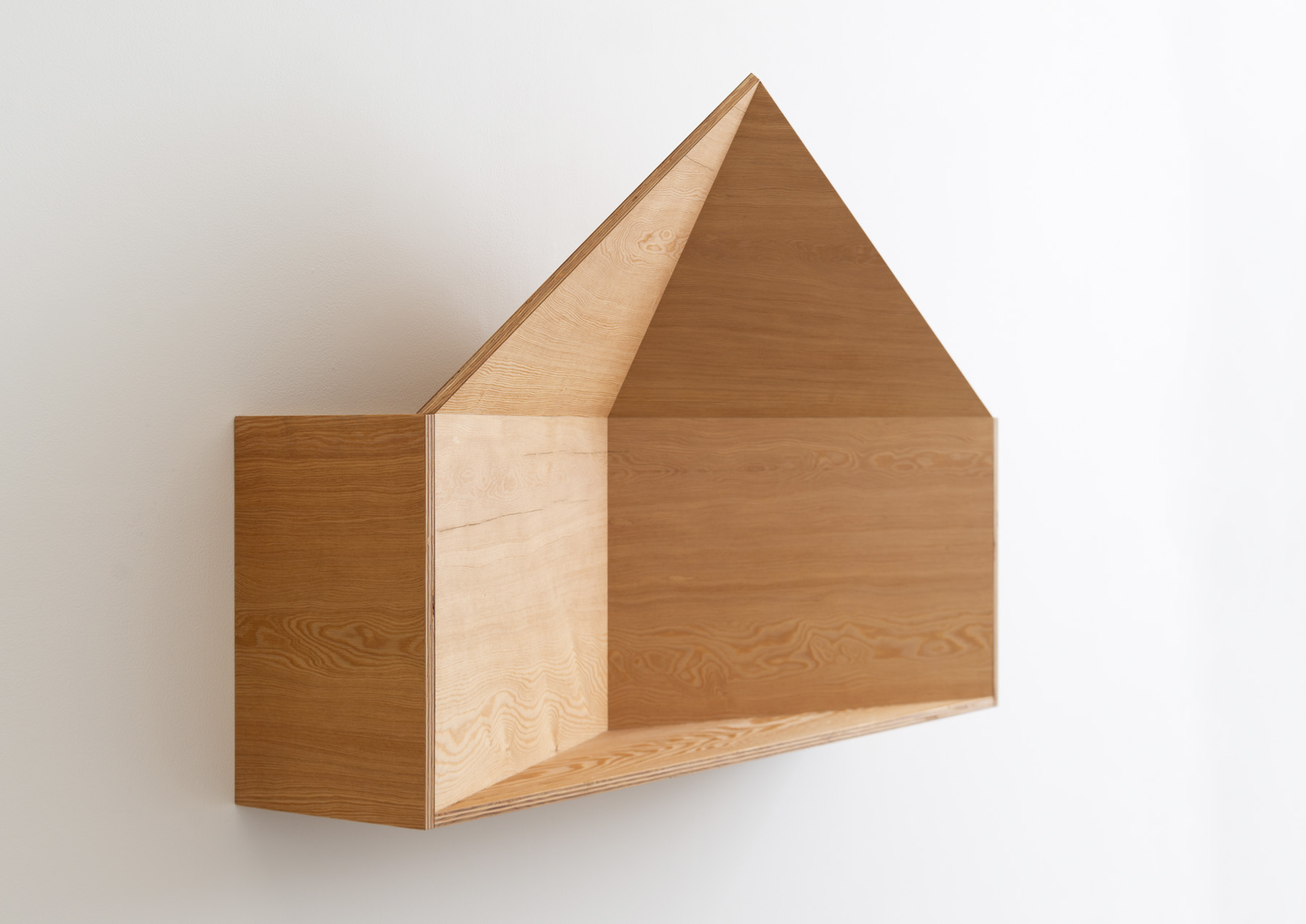
The use of weaving techniques in Lantern and Cozy is reflective of Burks’ deep respect and intentional incorporation of artisanal craft traditions into his practice in an attempt to not only express the relevance of hand production in contemporary design, but to also underscore the divine nature of making in general. Against movements that laude creative authorship as a key marker of American individualism and exceptionalism, Burks maintains a commitment to collaborative building and resource sharing as a set of ethical and creative practices that are reflected in the materiality of Spirit Houses and many of his other projects.
Ypsilon, the largest of the three, is a Y-shaped floor lamp that stands at the scale of Burks, a fully grown human being, with his arms outstretched in exaltation. The Greco-Roman origins of the letter and metaphorical symbol are rooted in the ancient notion of arriving at a fork in the road or a threshold, reflecting vice and virtue, and the importance of making the right or righteous choice. In this impressive sculptural object, memories of morality are integrated within its form. Thus through Ypsilon, we can see how even a lamp can be considered sacred through its expression and use.
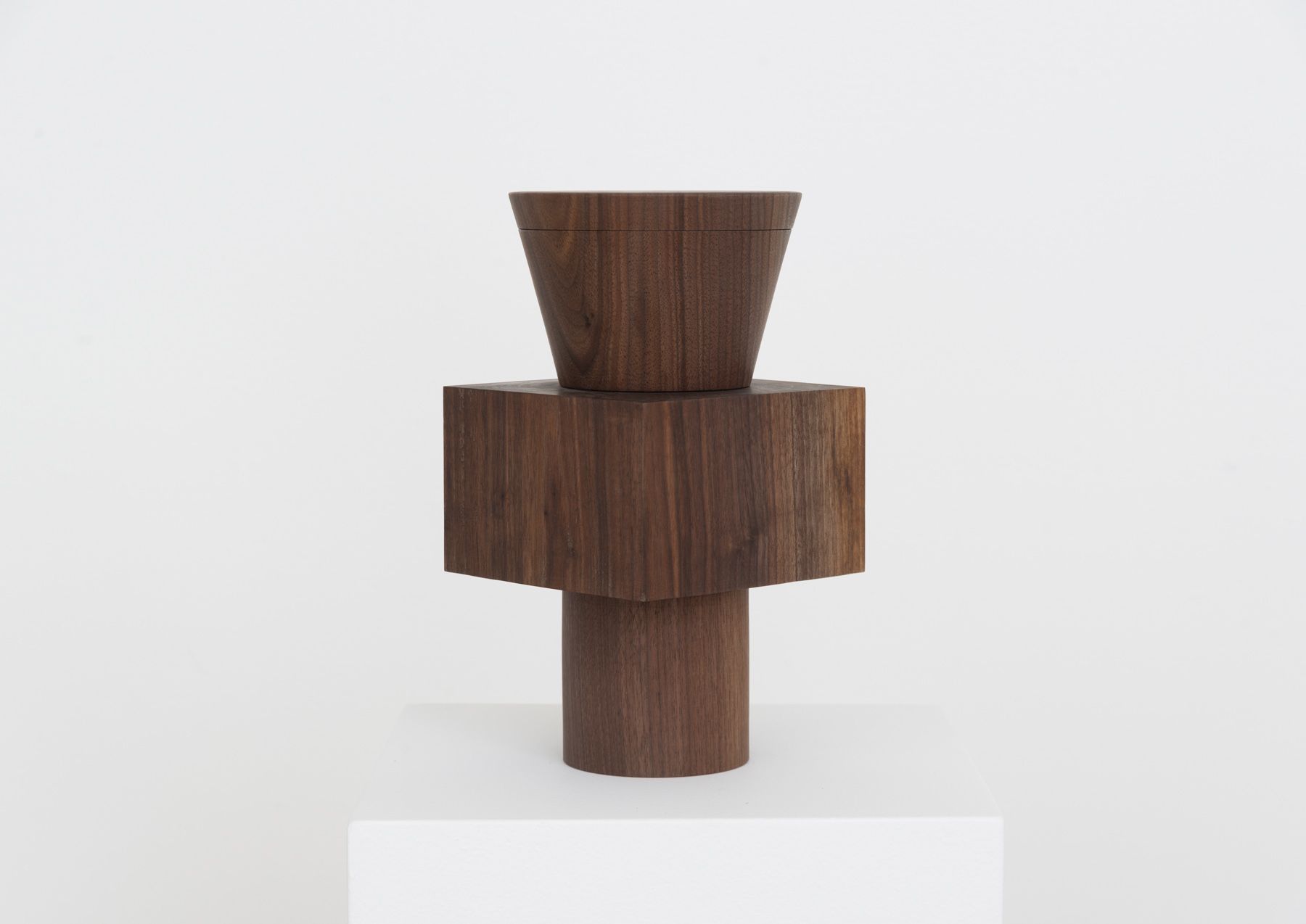
As a daughter of ancestors named and unnamed, I understand the creation of Spirit Houses as both a meditation on the importance of the ancestral realm and as a design imperative for the modern world as we increasingly look to earth honoring and communal-based practices in response to the failures of rapid globalization, environmental degradation, structural racism, and inequity. I believe Burks’ process-oriented approach and design of Spirit Houses embodies the Twi principal Sankofa, which comes from the Akan peoples of Ghana and means “it is not taboo to go back and fetch what is at risk of being left behind.” The principle, Sankofa affirms that the power to know and honor our history and heritage is also the power to fully know ourselves in the current moments in which we exist. In his offering Spirit Houses, Burks has turned toward and honored spirit-based cosmologies while creating a new design lexicon and physicality through which we may engage the wisdom of our ancestors and honor the lives of our loved ones.
I often wonder what the western world would be like if each household had its own Spirit House, as most households each have chairs, tables, and beds. Affirming the importance of spiritual nourishment as central to our lives has the possibility to fundamentally shift how humans engage with each other and the world around us. Thus, Spirit Houses are not only a new expression of design, but they are also an ethical intervention and expansion of our daily practices, allowing us the space to commune, honor and love in ways that affirm our intrinsic interdependence with the world around us.
Ibá Egbe Orun
Ibá Tototo
We pay homage to our heavenly comrades
We pay homage to the ancestors, [known] and unknown
Volume 101
Spirit Houses at Volume Gallery
September 8 - October 28, 2023
© 2023 Volume Gallery
Disegno Journal
February 15, 2021With the romanticism of a wiser woman looking back on a fleeting youth, Joan Didion once described New York City as the “shining and perishable dream itself”.
Stephen Burks for Goodee
September 1, 2019"I found myself back in school in the midst of a year-long fellowship, where I met Malika."
Najha Zigbi-Johnson for Volume Gallery
September 8, 2023Within this spiritual and cultural context, I engage and understand the most recent work of industrial designer Stephen Burks, who has created a collection of modern altars entitled Spirit Houses.
By Diana Budds for New York Magazine
November 7, 2023Stephen Burks Wants to Finish a 20-Year-Old Conversation With Fran Lebowitz.
By Malika Leiper for Disegno #34 x Het Nieuwe Instituut Design Drafts #1
September 21, 2022How to begin writing about design if the word does not even exist?
The New York Times by Lauren Messman
April 15, 2024You can always see where you would like to sit at the annual festival of furnishings and household objects.
By Vasia Rigou for The Chicago Reader
September 19, 2023The Volume Gallery exhibition connects past, present, and future through reverent design.
Perez Projects Presents BD Barcelona: A New Perspective, 50 Years of Design
April 16, 2023By Dennis Scully & Fred Nicolaus for Business of Home
January 23, 2023Stephen Burks wants to open the doors of the design industry.
Living Corriere Della Sera No. 4
Creative Survival Tactics: At Home with Malika Leiper & Stephen Burks by Olivia Fincato
"We transformed a former bakery into a modernist gallery."
By Stephen Burks for the Oak issue of Material Intelligence online, edited by Glenn Adamson.
June 2, 2022Yes, the mighty oak tree, the stuff of legends, is also the traditional
basket maker’s wood of choice in Appalachia, as elsewhere
in the eastern United States.
Milan Furniture Fair
April 17, 2023New Kida dining chair to be presented during 2023 Milan furniture fair
Stephen Burks: Shelter in Place Book Review in Untapped Journal by Francesca Perry
February 13, 2023The book Shelter in Place considers the possibilities, and the precedents, of the designer’s inclusive approach to creating objects for the home.
Berea College Student Craft
September 26, 2019Today, Student Craft is no longer just a factory of student labor, as it had been for nearly 100 years, but is transforming into an academic program producing open-ended products.
About
Stephen Burks Man Made is a hands-on collaborative design studio deeply invested in the transformative power of craft techniques that challenge the limits of new technologies within industrial production.
We believe in a pluralistic vision of design that is inclusive of all cultural perspectives and backgrounds.
We bring the hand to industry through a community-driven, workshop-based practice.
Our projects include furniture, lighting, interiors, exhibitions, and product design.
We are Stephen Burks (Principal), Malika Leiper (Cultural Director), Vara Yang (Design Consultant), and Fridolin Jeger (Design Assistant).
Our solo exhibition Stephen Burks: Shelter in Place, formerly at the High Museum of Art in Atlanta (September 16, 2022 - March 5, 2023) is part acclaimed mid-career survey and part commissioned speculative project presenting the last decade of professional practice alongside new expressions of radical domesticity through handcrafted industrial design.
Most recently, Stephen Burks: Spirit Houses opened at Volume Gallery in Chicago and Stephen Burks: Shelter in Place (November 19. 2023 - April 16, 2024) opened at the Philadelphia Museum of Art where Stephen became the first African American to receive the Collab Design Excellence Award.
Follow us on Instagram @stephenburksmanmade and contact us at info@stephenburksmanmade.com.
Stephen Burks
Chicago native, Stephen Burks is an industrial designer, product development consultant, and educator whose innovative approach to design synthesizes craft, community, and industry. Independently and through association with various non-profits, he has collaborated with artisans and craftspeople in over ten countries on six continents. His socially engaged practice seeks to broaden the limits of design consciousness by challenging who benefits from and participates in contemporary design.
Stephen and his studio, Stephen Burks Man Made, have been commissioned by many of the world’s leading design-driven brands to develop collections that engage hand production as a strategy for innovation to express a more pluralistic vision of design including BD Barcelona, Cappellini, Dedon, MASS Design Group, Missoni, & Roche Bobois.
He has had solo exhibitions and led curatorial projects at the Studio Museum in Harlem (Stephen Burks Man Made, 2011), the Museum of Art & Design (Stephen Burks, Are You a Hybrid, 2011), and the High Museum of Art (Stephen Burks: Shelter in Place, 2022).
He has been visiting faculty and a strategic consultant to academic institutions around the globe and taught architecture and design at Berea College, Columbia University GSAPP, ECAL, the University of Arkansas Fay Jones School of Architecture & Design, and the Harvard University Graduate School of Design.
Stephen is the only African-American to win the Smithsonian Cooper Hewitt National Design Award in Product Design and the only industrial designer to be awarded the prestigious Loeb Fellowship at the Harvard Graduate School of Design.
Malika Leiper
Originally from Cambodia, Malika Leiper is interested in the culture of design across various disciplines with a particular focus on emergent contexts in Southeast Asia.
After completing her master’s in urban planning at Harvard’s Graduate School of Design, she consulted with restaurants, non-profits, local governments, and museums on research and strategies to build creative cultural capacity, often through public programming and community engagement.
She approaches design as a collaborative process of translating knowledge and insights from different worlds into one common language through technical, moral and utopian applications.
Most recently, Malika has contributed to Disegno Journal #34 as a Het Nieuwe Instituut inaugural emerging writing fellow with her first published short story, When The Words Don't Exist.
Vara Yang
Vara Yang joined Stephen Burks Man Made as an industrial designer in New York in 2017.
Before working at Stephen Burks Man Made, she worked with several startups helping them bring their products and services to the market, including smart home devices, smartwatches, smart jewelry, and 3D printers.
Now an independent consultant based in Rotterdam, she continues to work with the studio on projects at various scales from furniture design to packaging to exhibitions.
Vara received her bachelor’s in design engineering from National Cheng Kung University in Taiwan and her master’s in Industrial Design from the Rhode Island School of Design.
- 2023 Ancestors (Guardian) Friedman Benda
- 2023 Precioso Salvatori
- 2023 Spirit Houses Volume Gallery
- 2023 On New Cosmologies: Stephen Burks Approaches the Sacred Najha Zigbi-Johnson for Volume Gallery
- 2023 The Sacred and Profound By Vasia Rigou for The Chicago Reader
- 2022 Shelter in Place Prototypes High Museum of Art, Atlanta
- 2023 Kida Dining Chair Dedon
- 2023 A Casa Di Burks Living Corriere Della Sera No. 4 Creative Survival Tactics: At Home with Malika Leiper & Stephen Burks by Olivia Fincato
- 2023 BD Barcelona 50th Features Grasso Perez Projects Presents BD Barcelona: A New Perspective, 50 Years of Design
- 2023 Zenith Stephen Burks Man Made
- 2018 Grasso Ceramics BD Barcelona
- 2020 Kida Dedon
- 2019 Kida in Production Dedon
- 2023 Business of Home Podcast By Dennis Scully & Fred Nicolaus for Business of Home
- 2018 Grasso BD Barcelona
- 2008 Horizon Tod's
- 2017 The Others Dedon
- 2019 Islands Living Divani
- 2019 Home as Project Stephen Burks for Goodee
- 2021 Welcome to Contemporaries Disegno Journal
- 2012 Dala Dedon
- 2013 Anwar Parachilna
- 2022 When The Words Don't Exist By Malika Leiper for Disegno #34 x Het Nieuwe Instituut Design Drafts #1
- 2023 Curbed 21 Questions By Diana Budds for New York Magazine
- 2021 Anywhere Kitchen USM Modular Furniture
- 2022 The Making of the Community Basket By Stephen Burks for the Oak issue of Material Intelligence online, edited by Glenn Adamson.
- 2021 Friends & Neighbors Salvatori
- 2023 How Stephen Burks “Future-Proofs” Craft Stephen Burks: Shelter in Place Book Review in Untapped Journal by Francesca Perry
- 2019 The Crafting Diversity Initiative Berea College Student Craft
- 2020 Pixel Blanket Berea College Student Craft
- 2020 Community Basket Berea College Student Craft
- 2013 Variations Calligaris + P:S
- 2015 Ahnda Dedon
- 2014 The Traveler Roche Bobois
- 2023 Shelter In Place The High Museum of Art
- 2022 The Spruce Berea College Student Craft
- 2004 Missoni Mogu Fun Fun Missoni
- 2011 Are You A Hybrid? Museum of Arts & Design
- 2020 Making of Broom Thing Berea College Student Craft
- 2014 A Free Man The White Briefs
- 2015 Frame Calligaris
- 2018 Floats Bolon x BD Barcelona
- 2022 Stephen Burks: Shelter In Place Catalogue By Monica Obniski for High Museum of Art
- 2016 The Traveler Outdoor Roche Bobois
- 2023 Dedon Launches Kida Dining Chair Milan Furniture Fair
- 2017 Irregular Weaving A/D/O
- 2011 Roping Dedar Milano
- 2011 Stephen Burks: Man Made Studio Museum of Harlem
- 2013 Hidden Gem Harry Winston
- 2018 Trypta Luceplan
- 2020 Broom Thing Berea College Student Craft
- 2015 Senegalese Basket Workshop
- 2013 Variations Workshop Journal Calligaris & P:S
- 2021 Magniberg Magniberg & Caroline Tompkins
- 2023 Powerhouse Ceramics Design Fellowship Friedman Benda Gallery
- 2024 Clay Break University of Arkansas Art Ceramics Department
- 2018 BD x Bolon Workshop BD Barcelona & Bolon
- 2024 Taking a Moment to Lounge at Milan Design Week The New York Times by Lauren Messman
